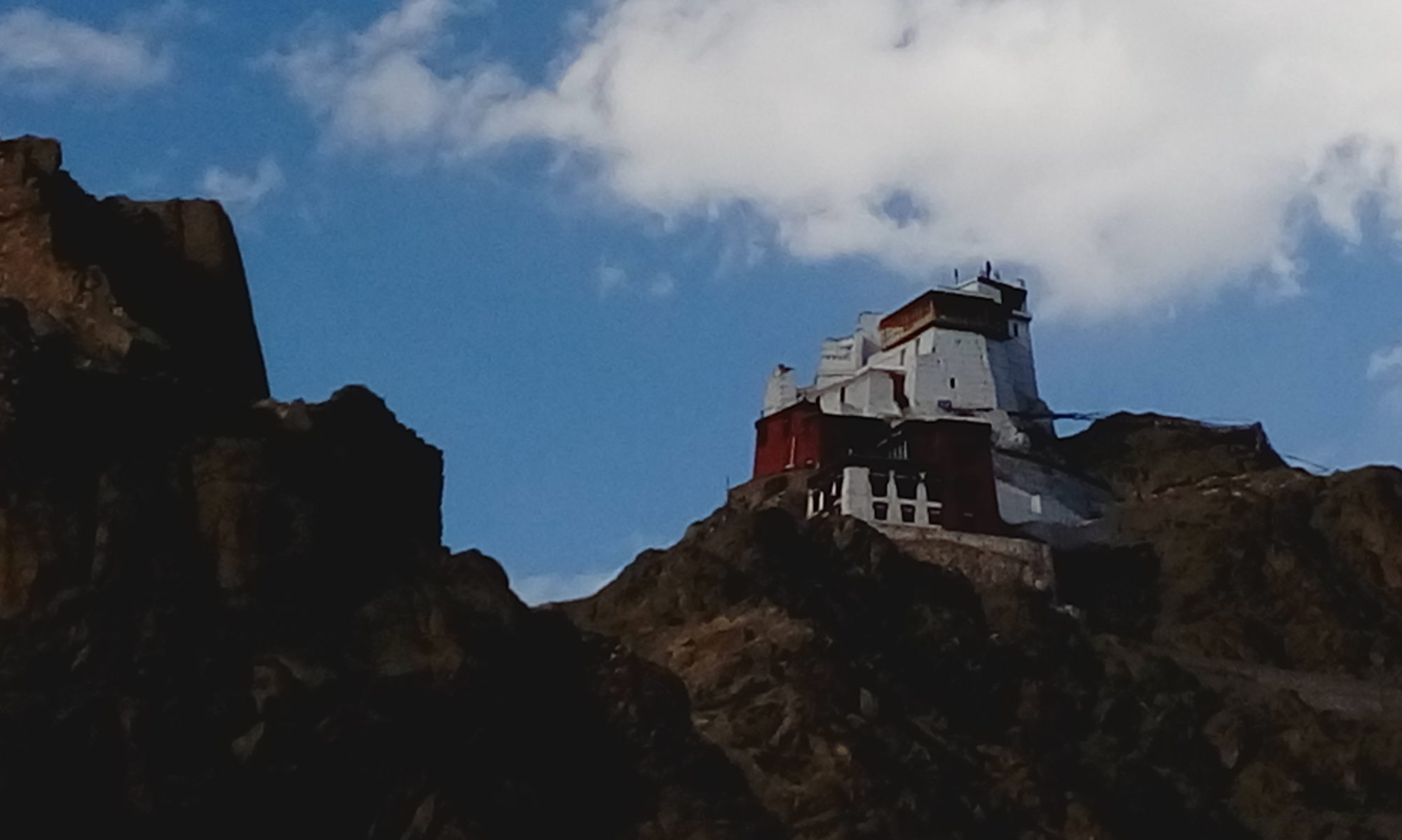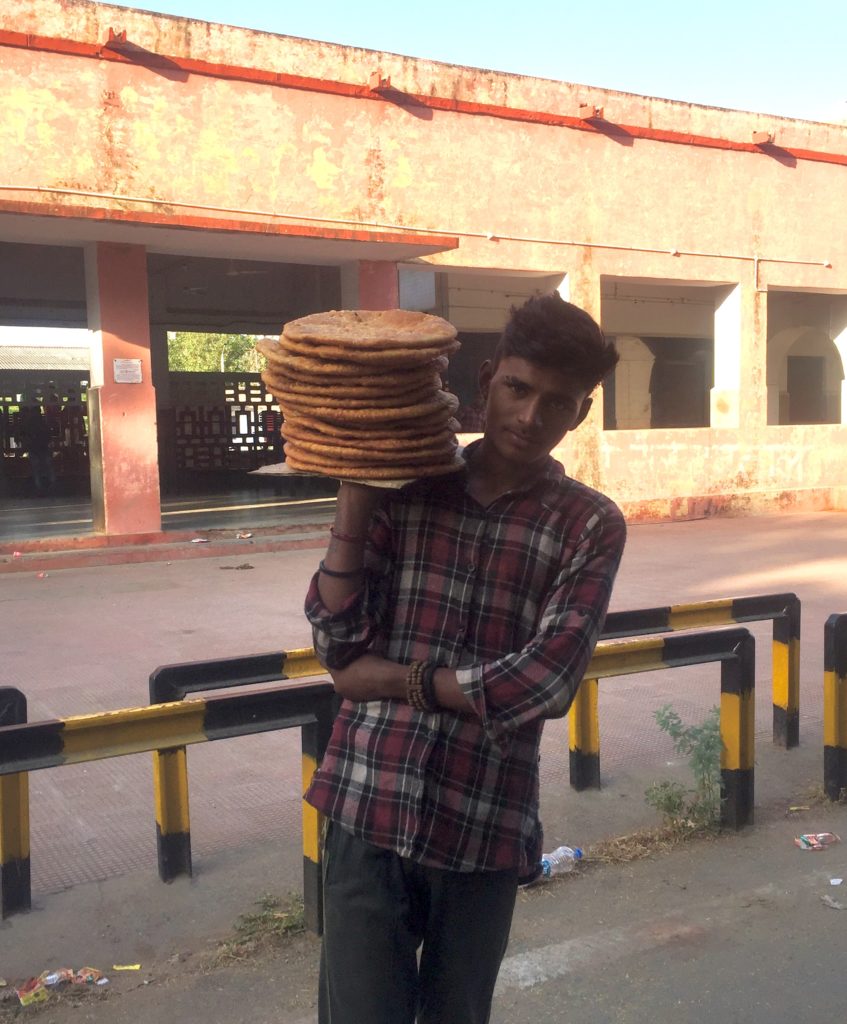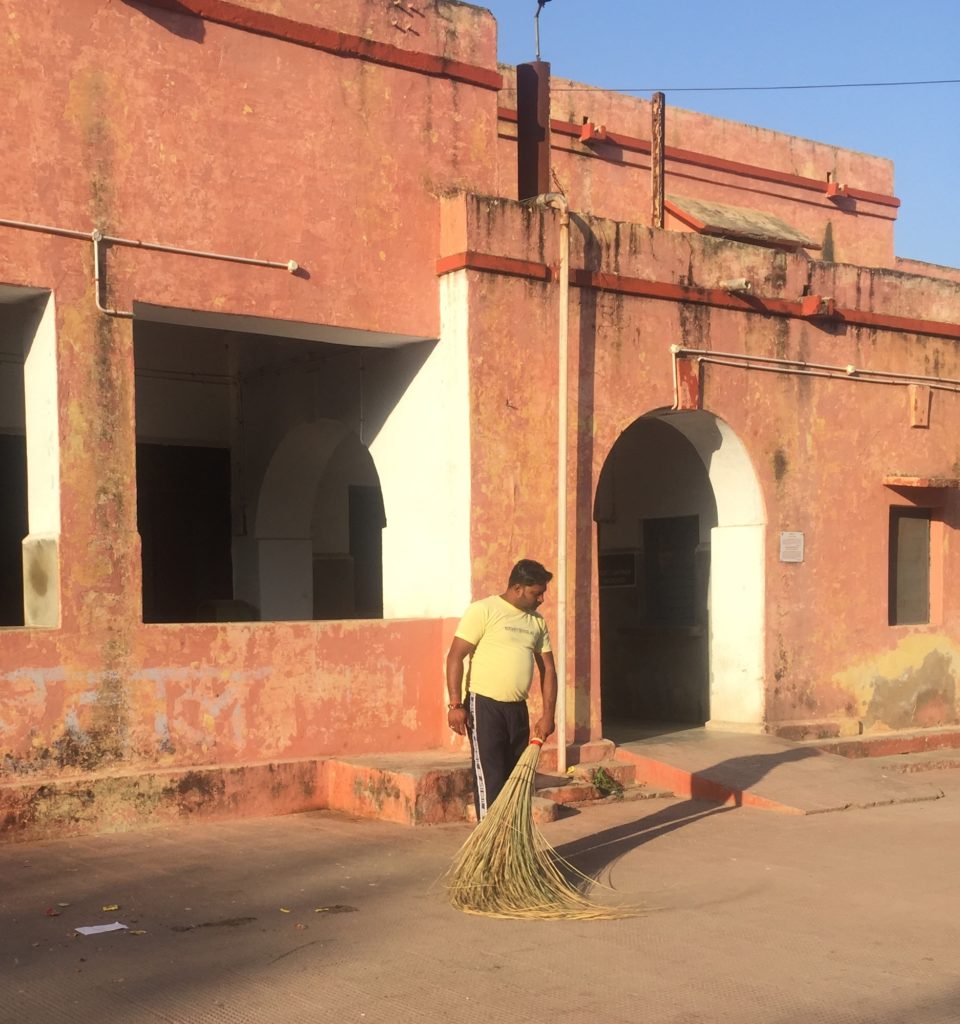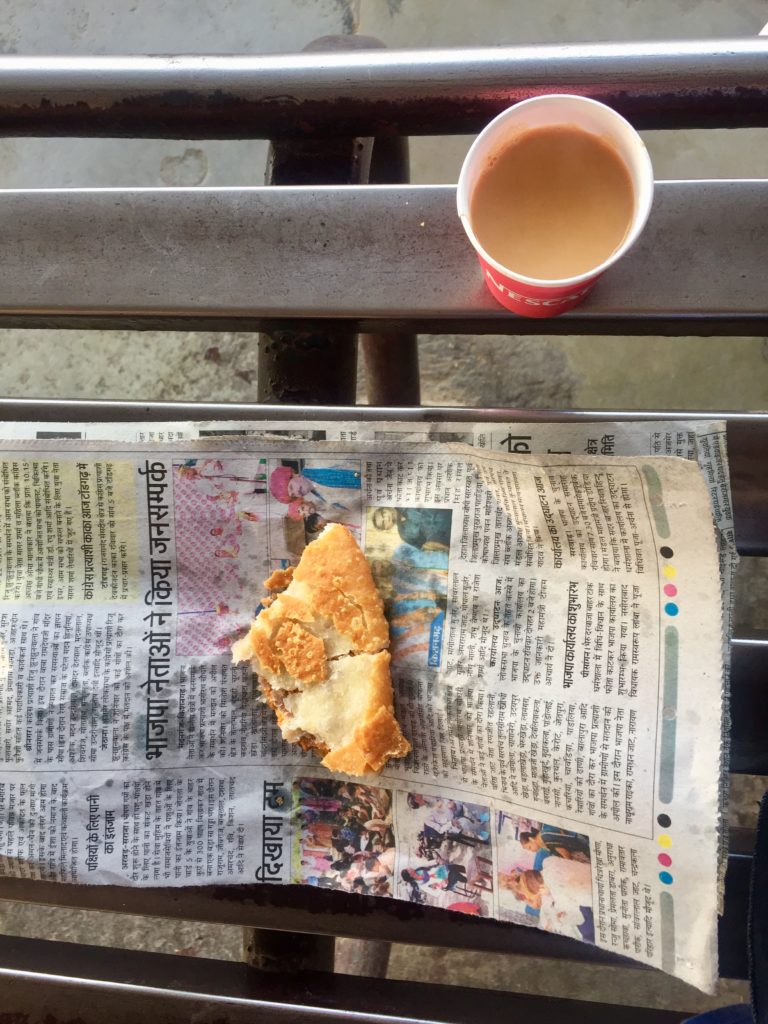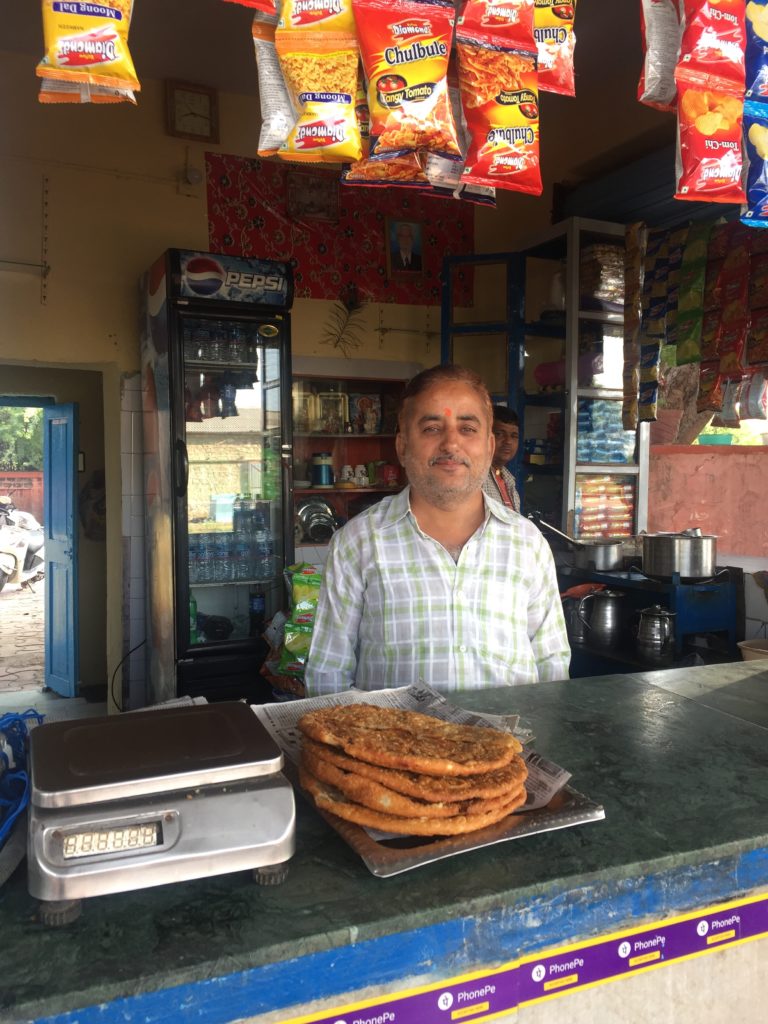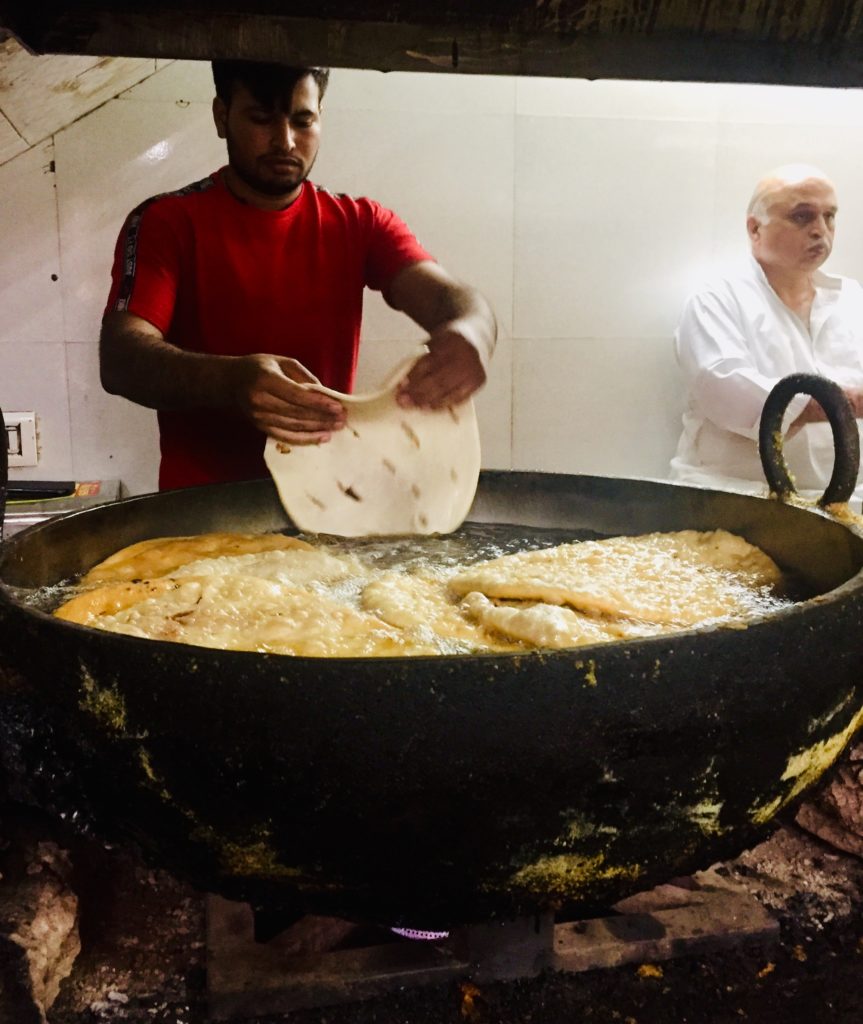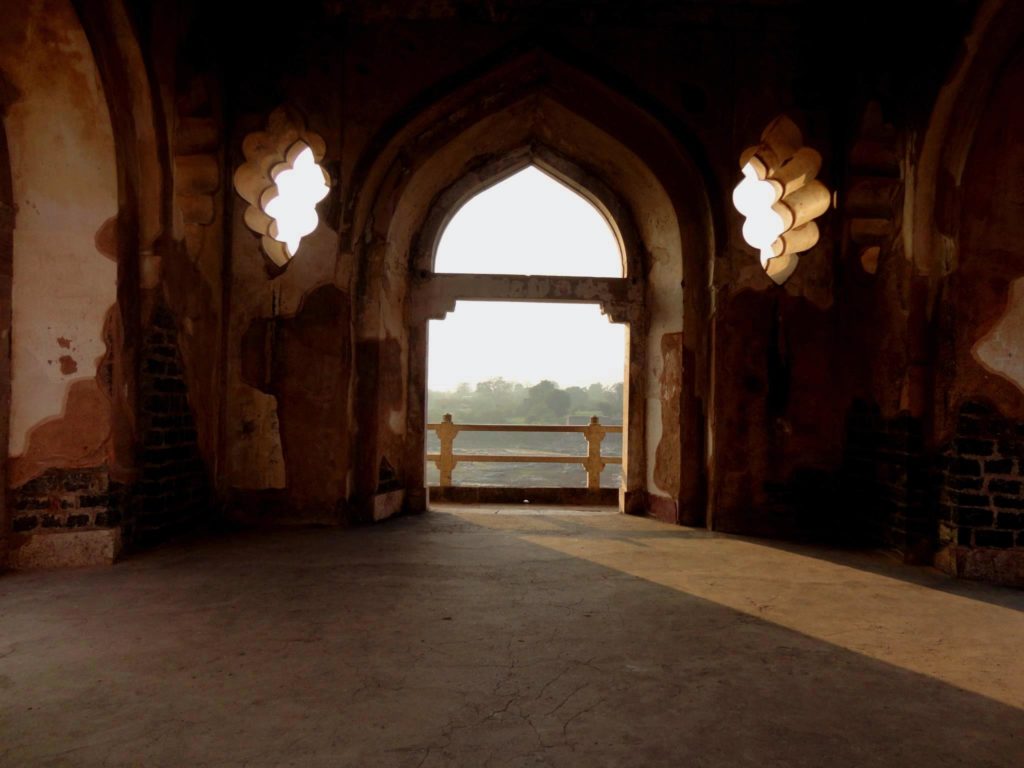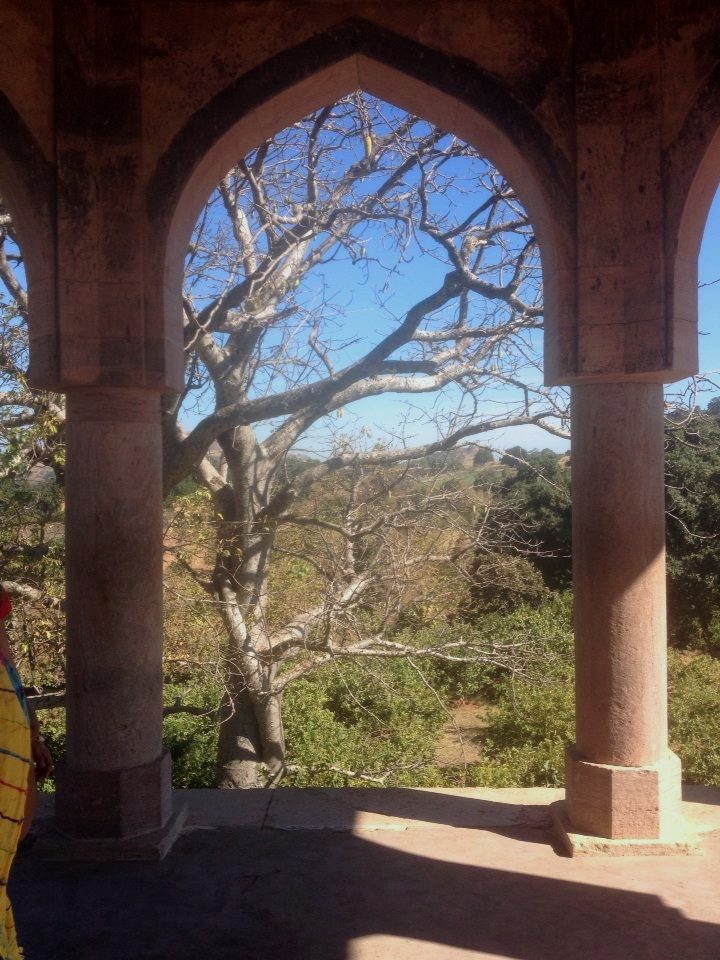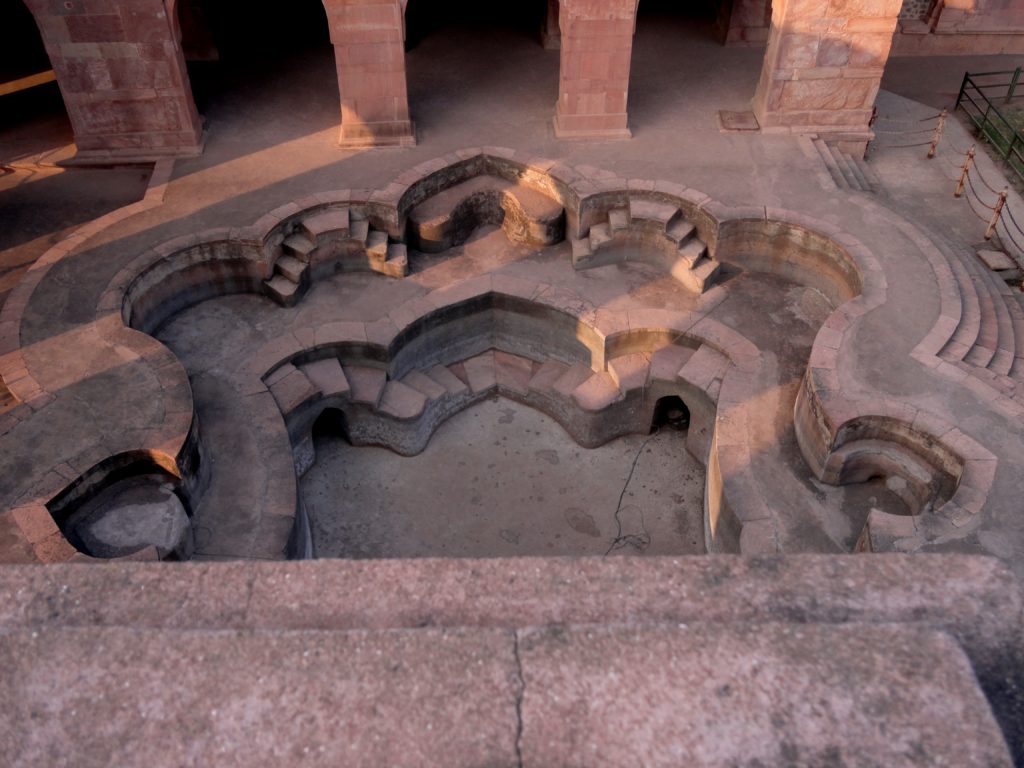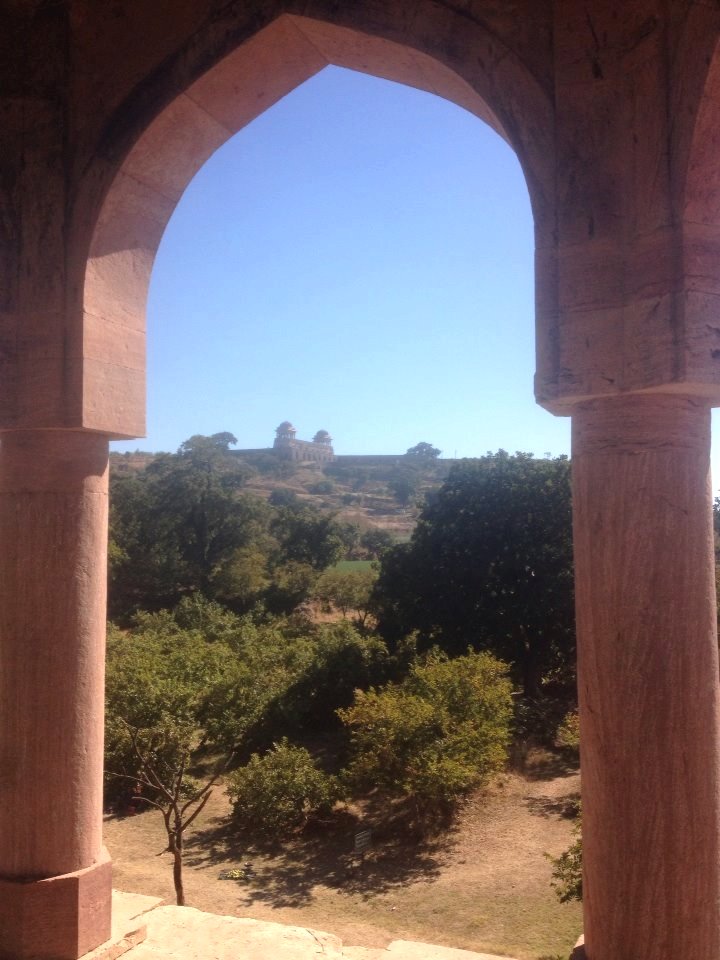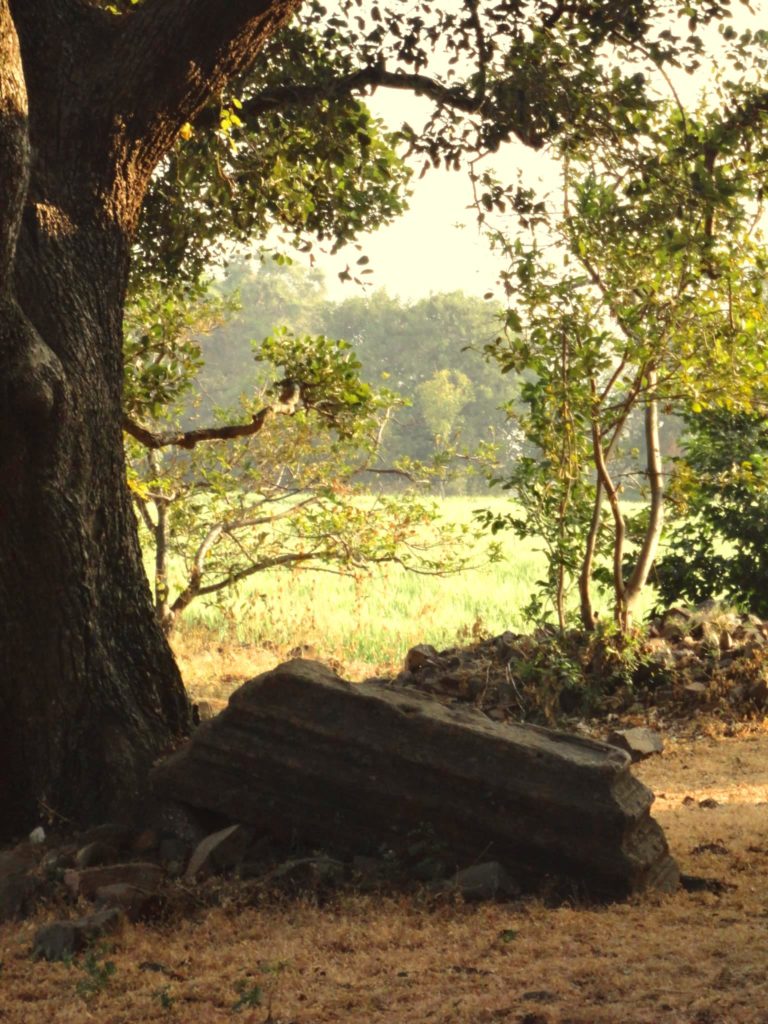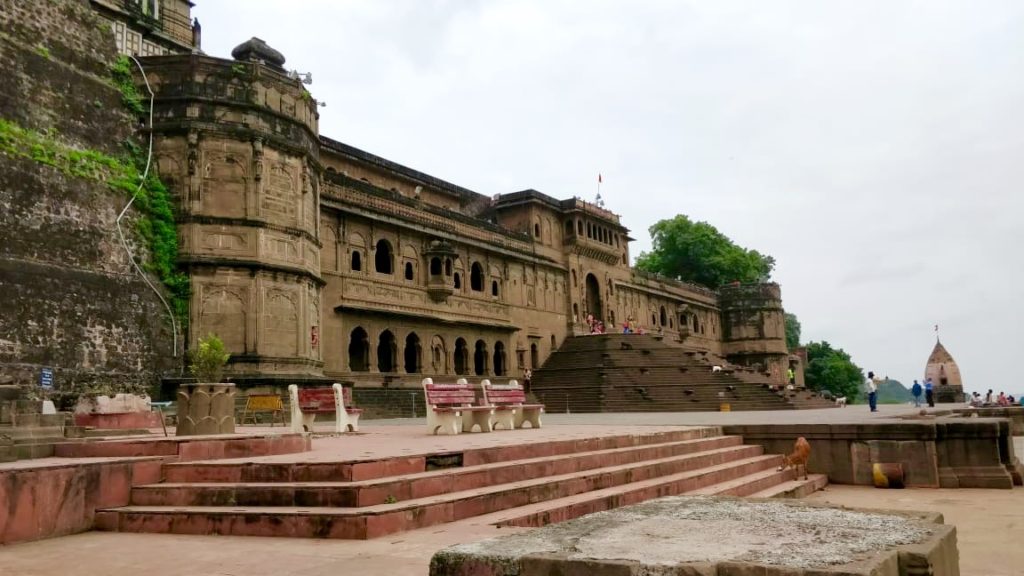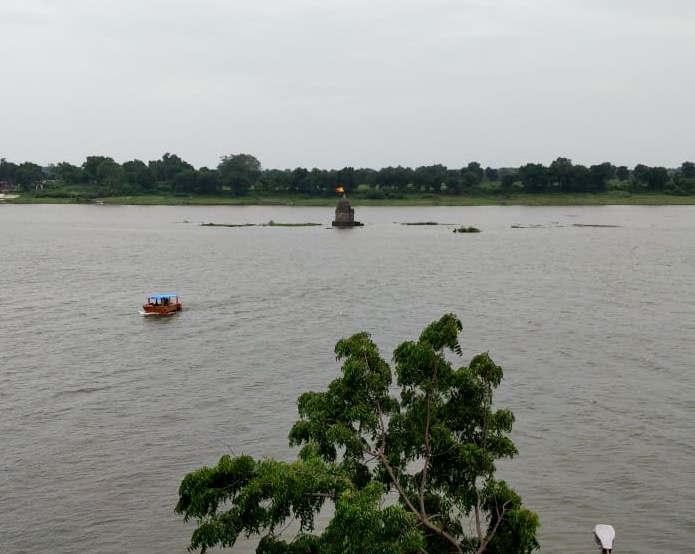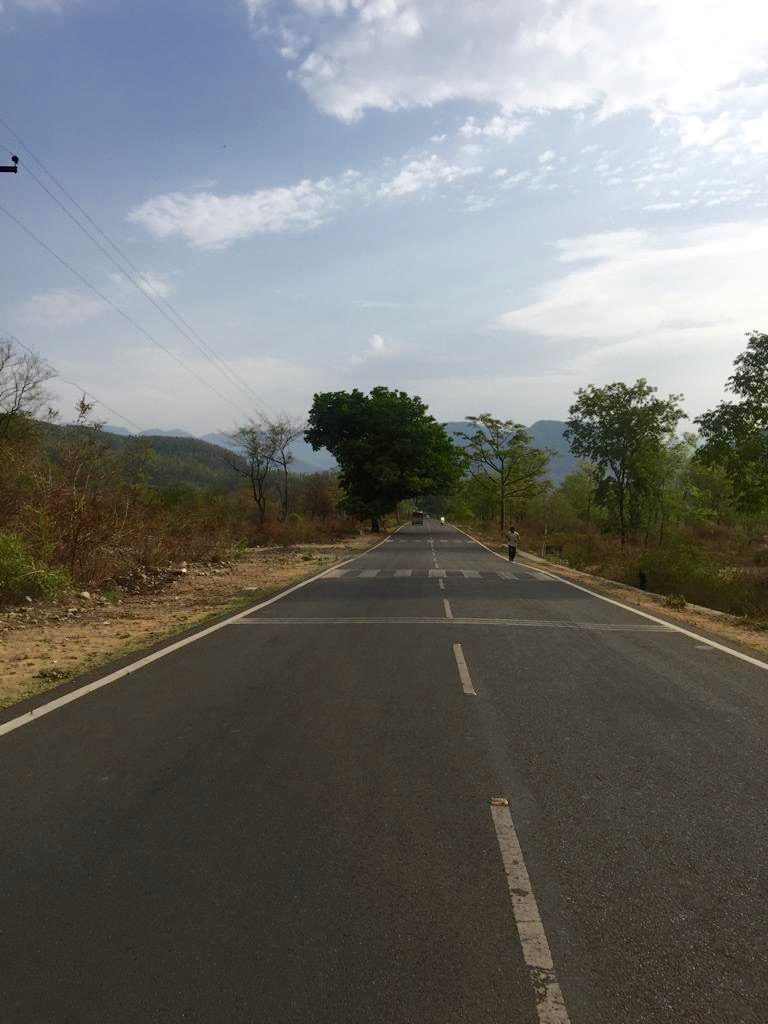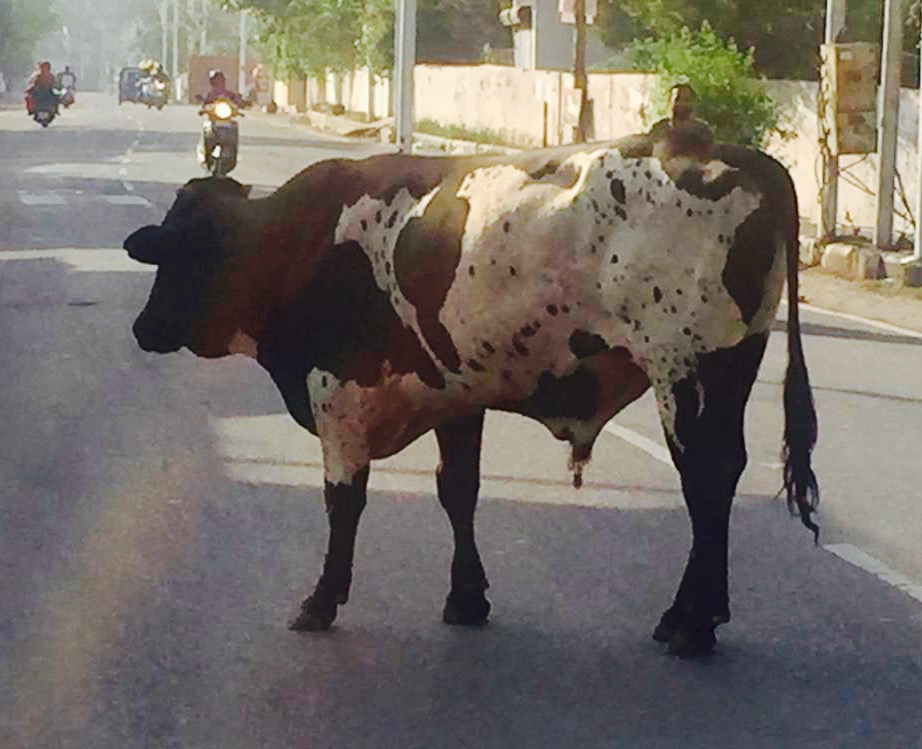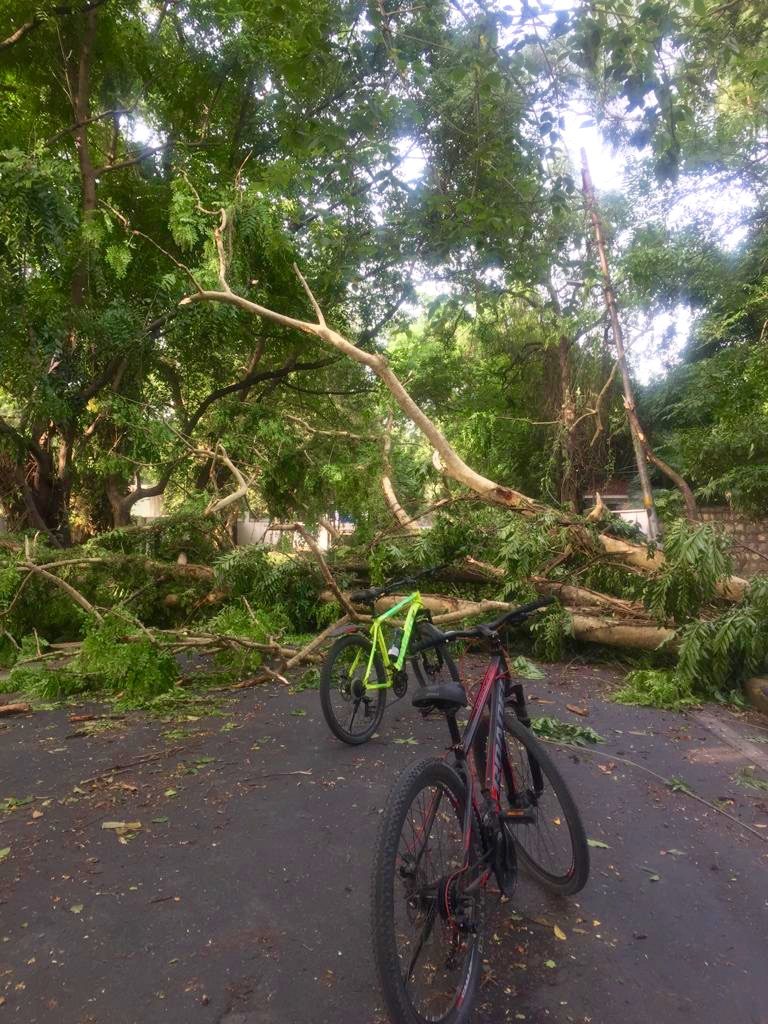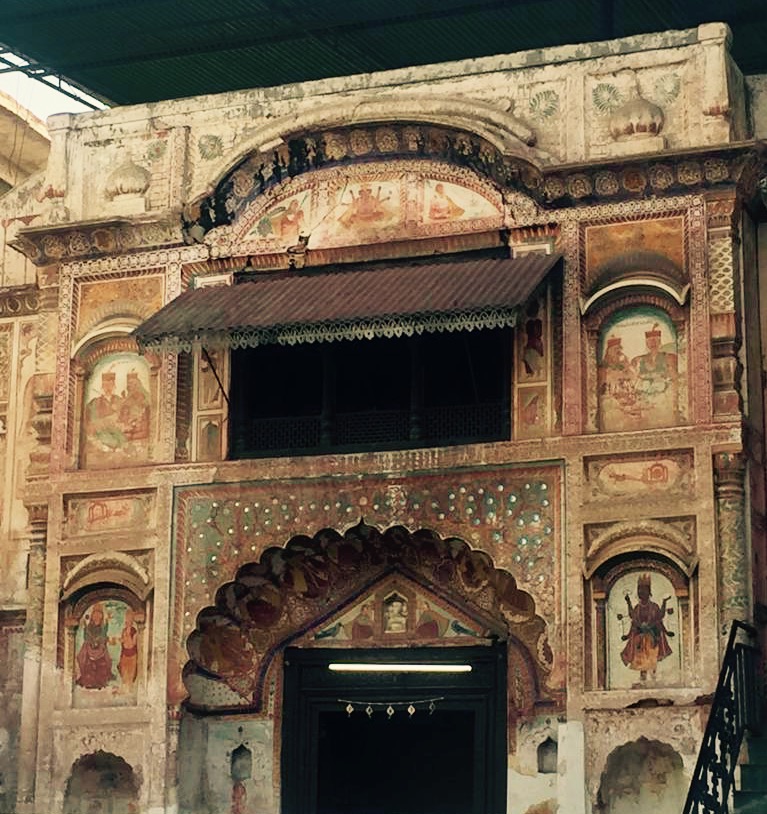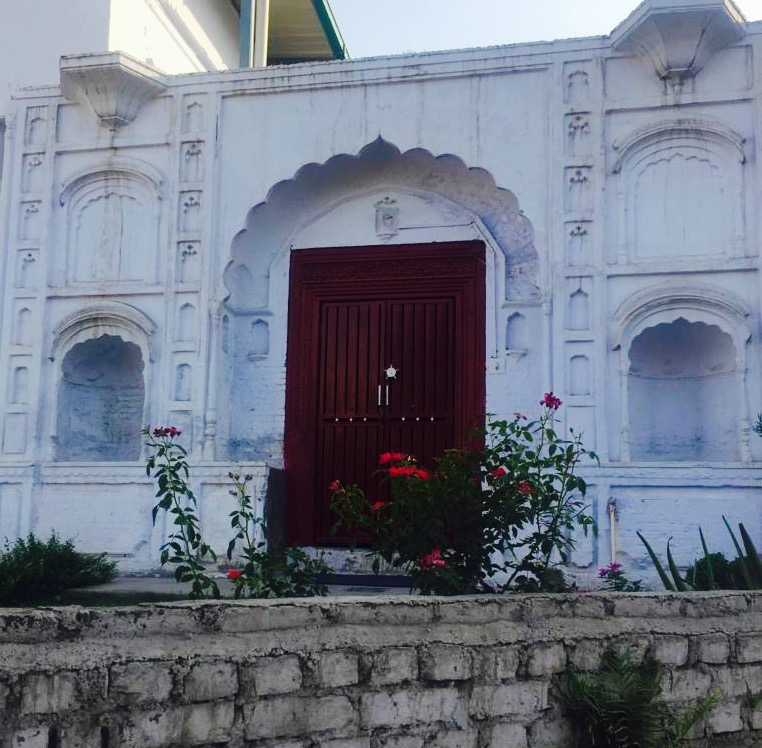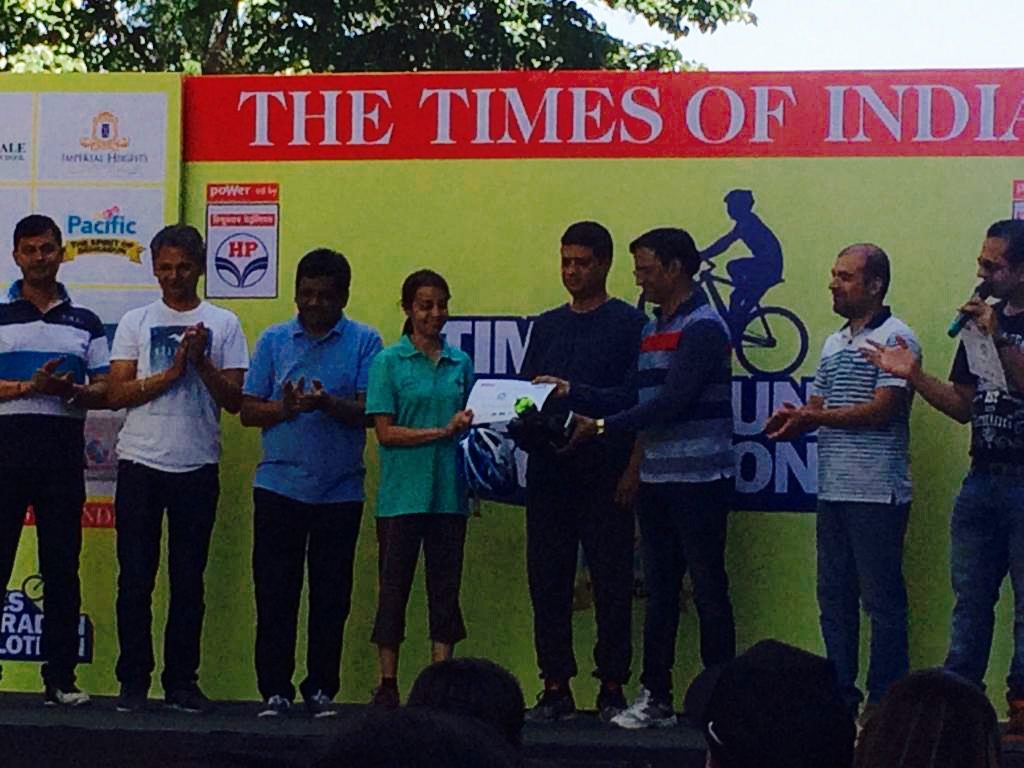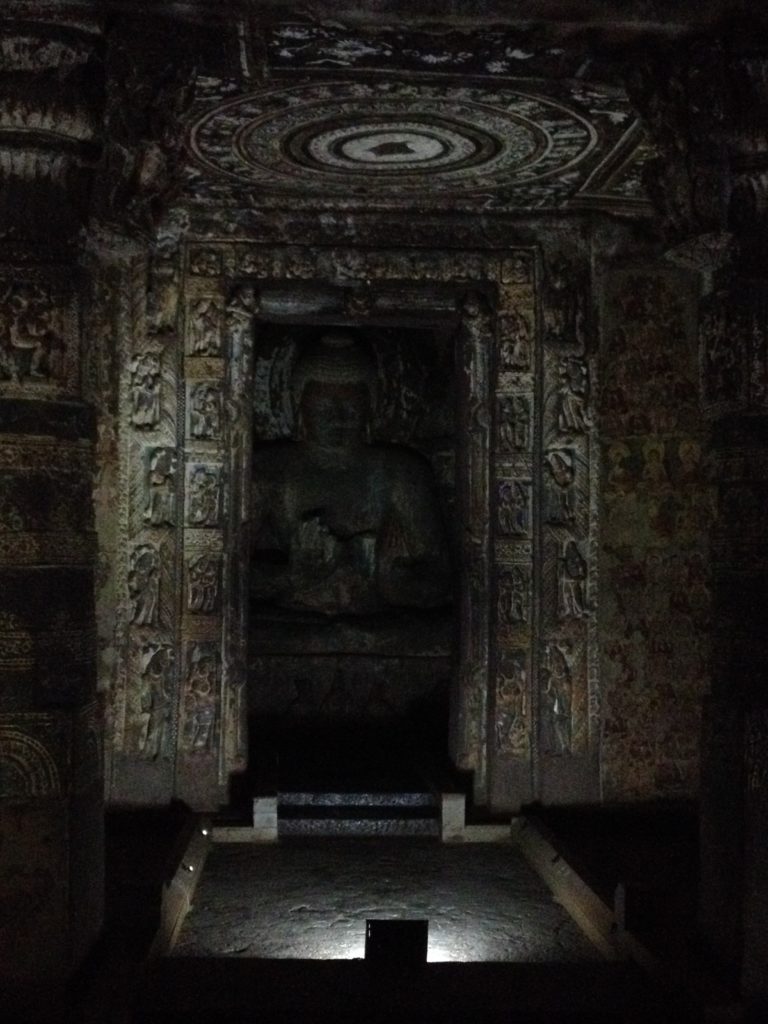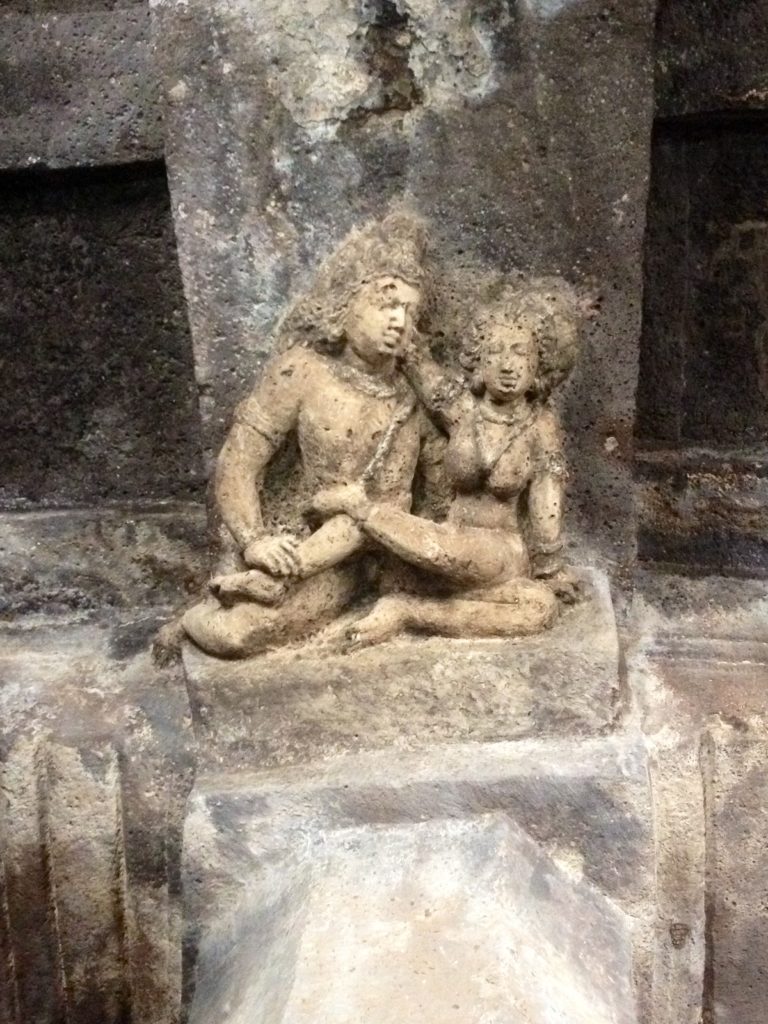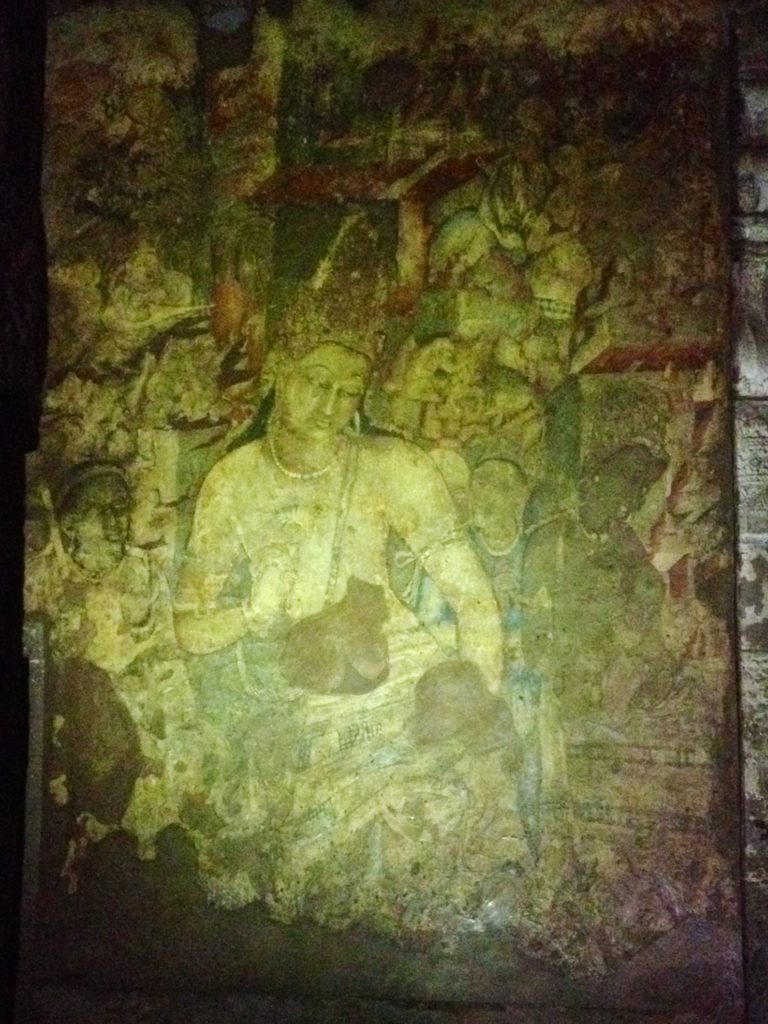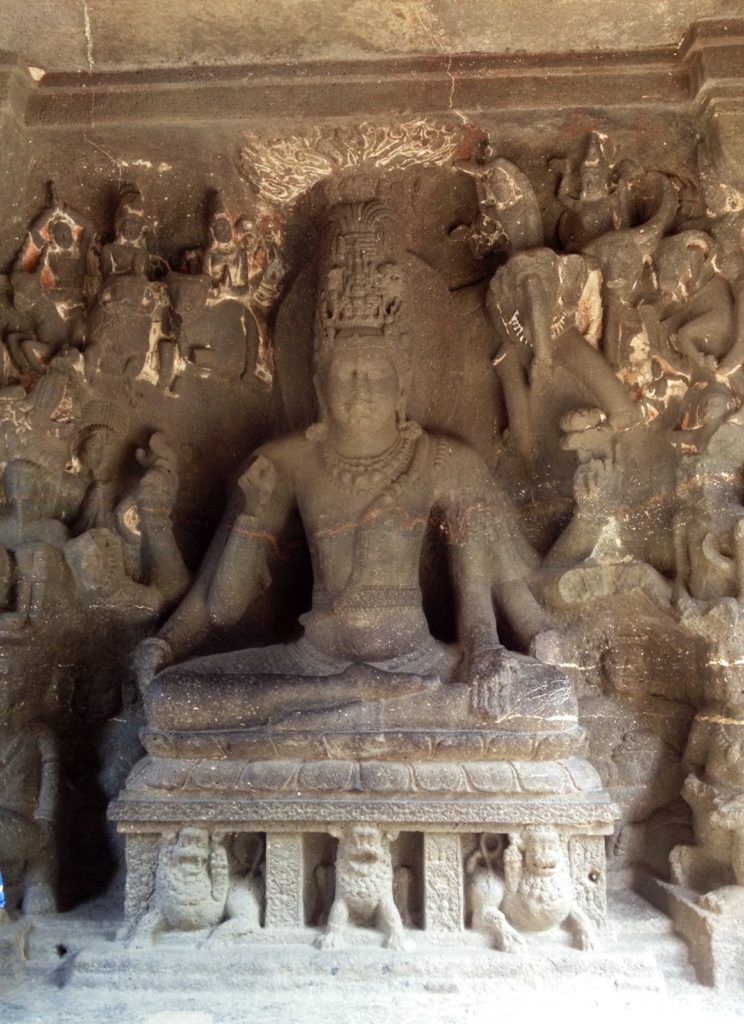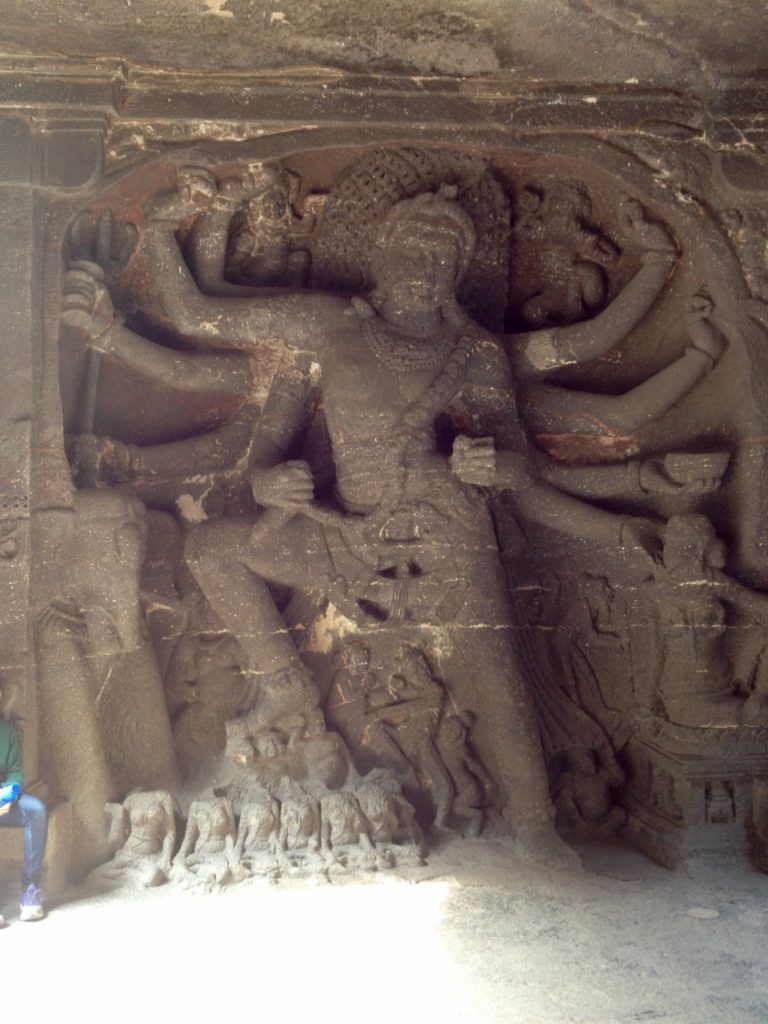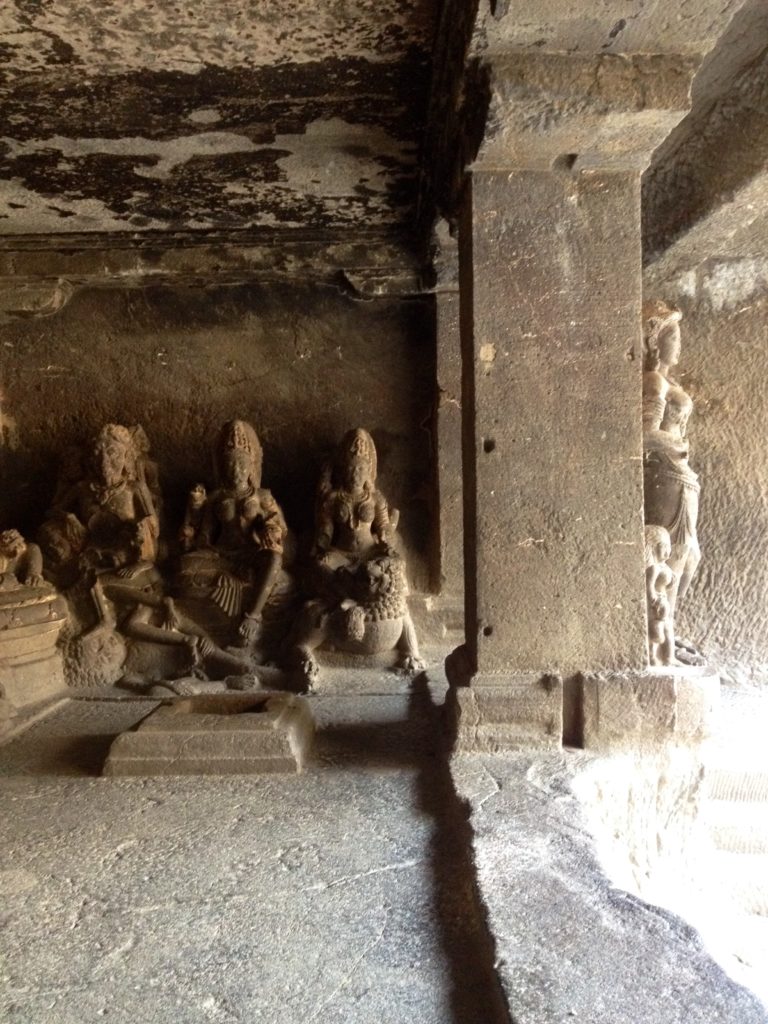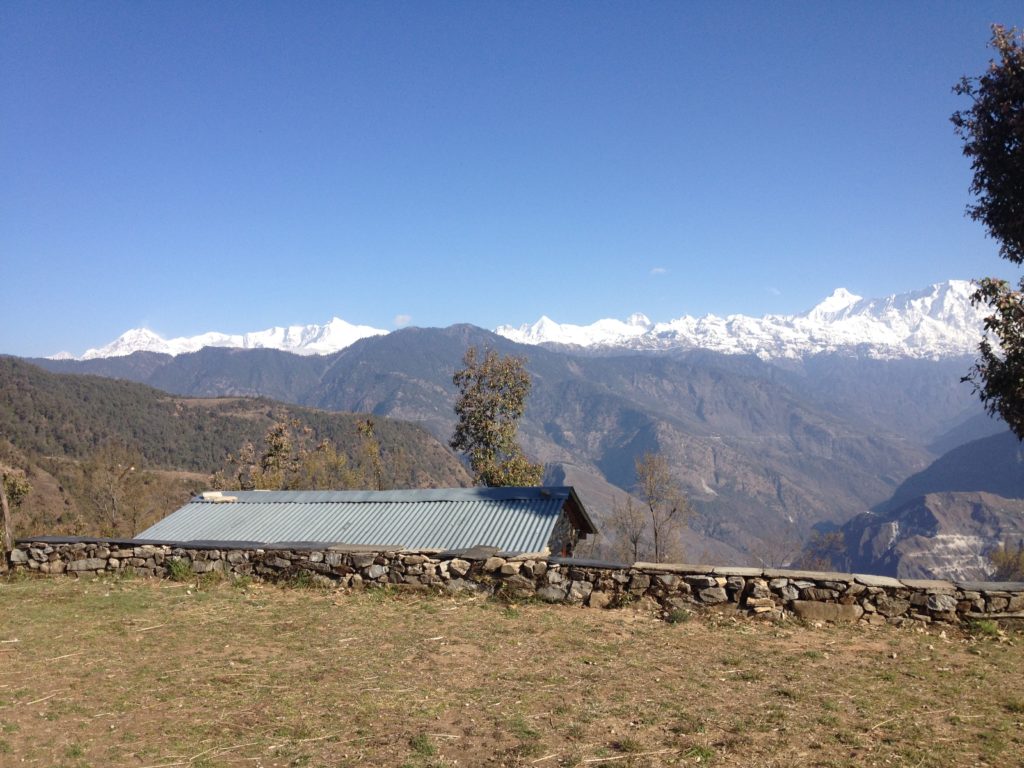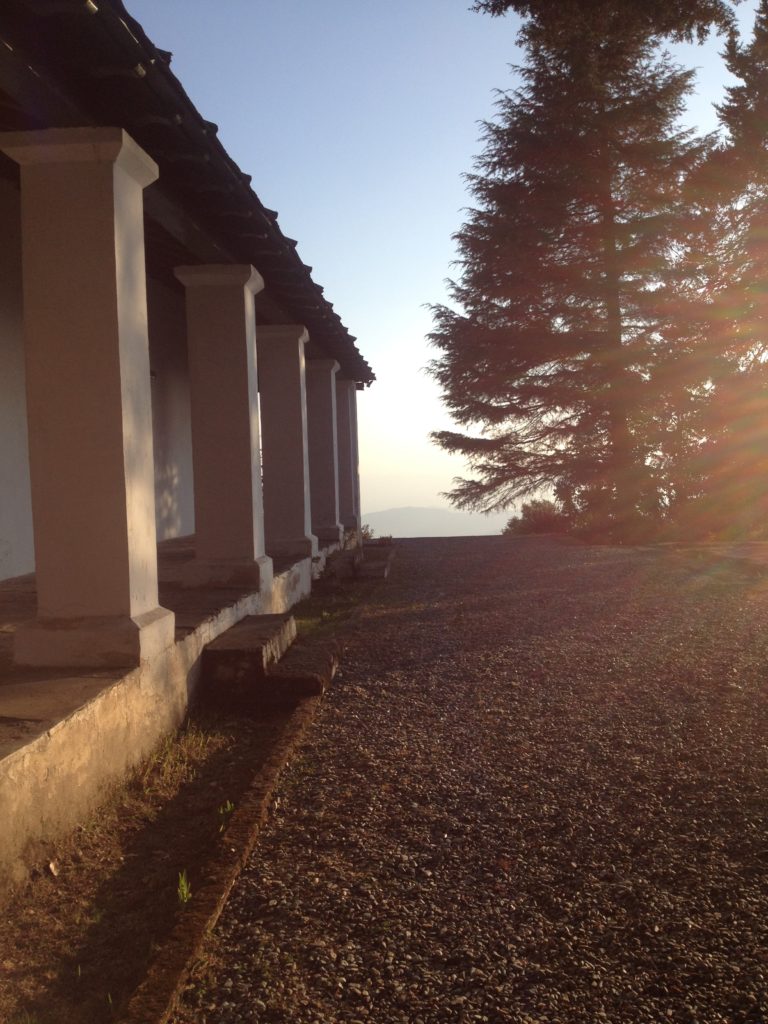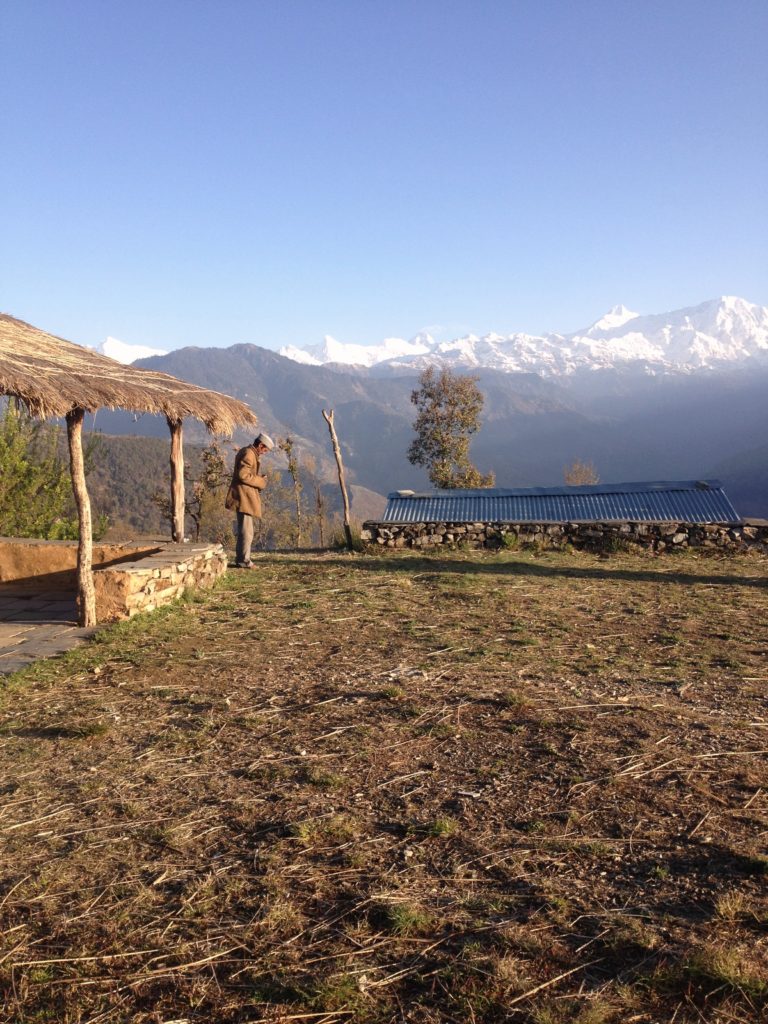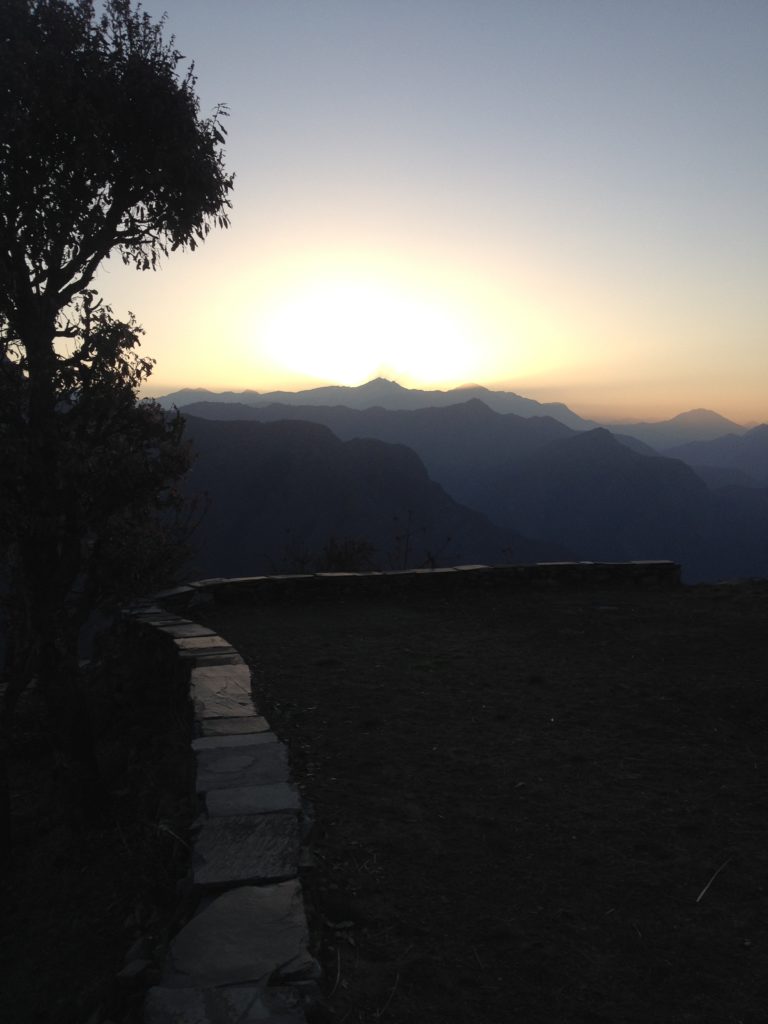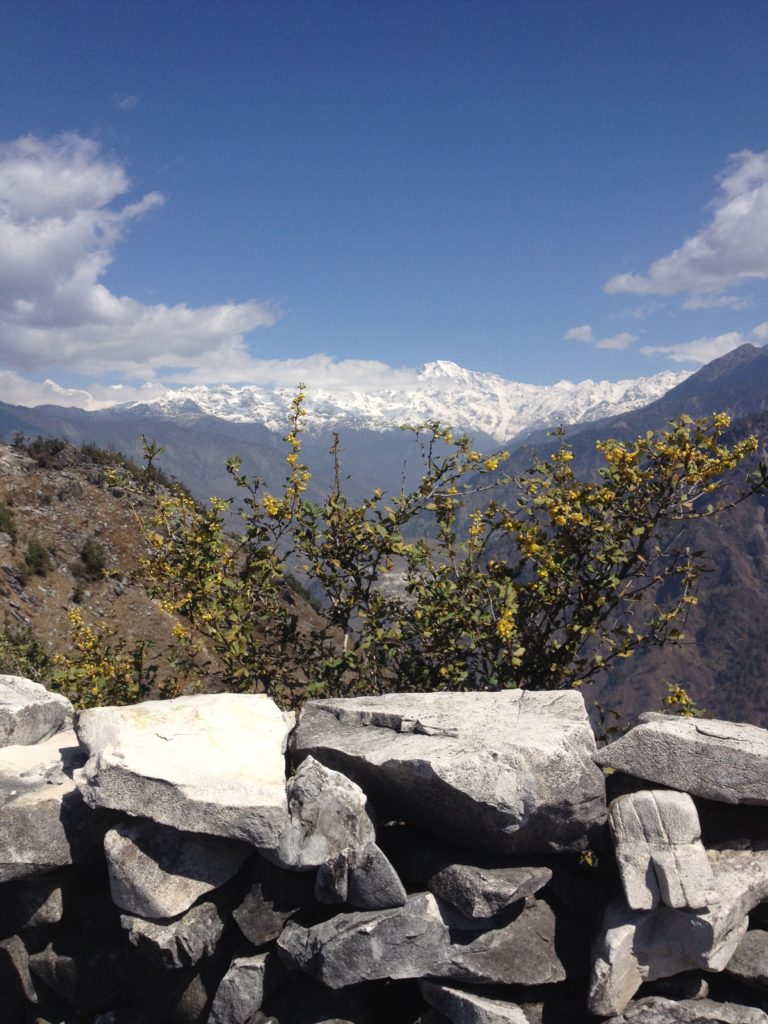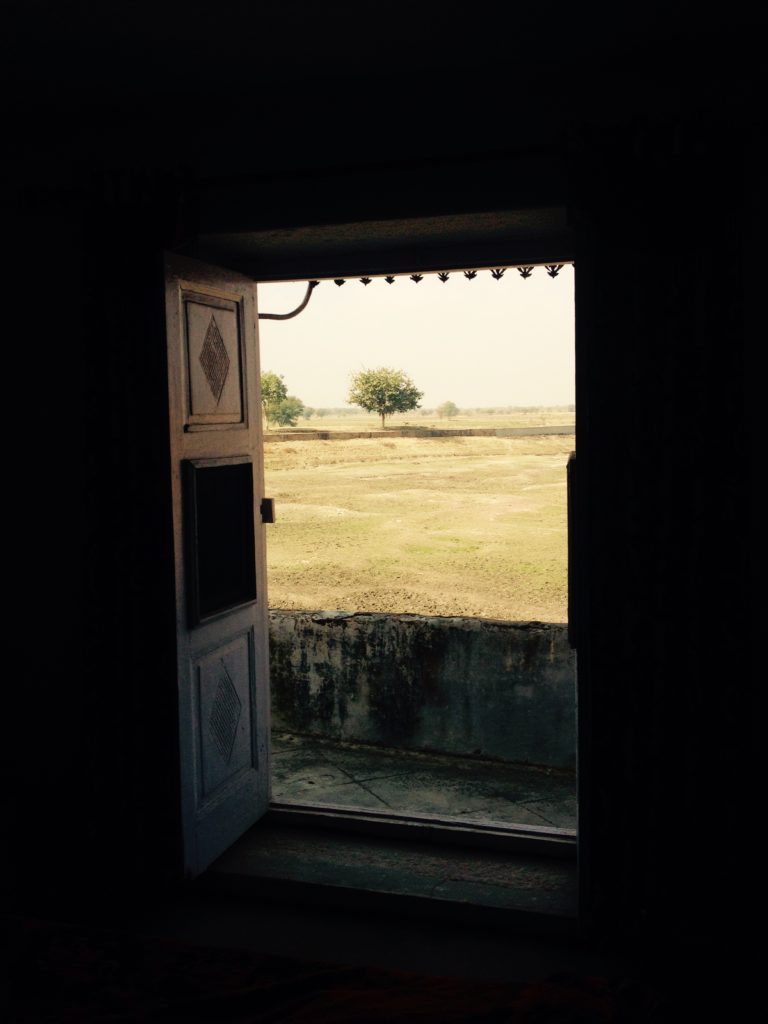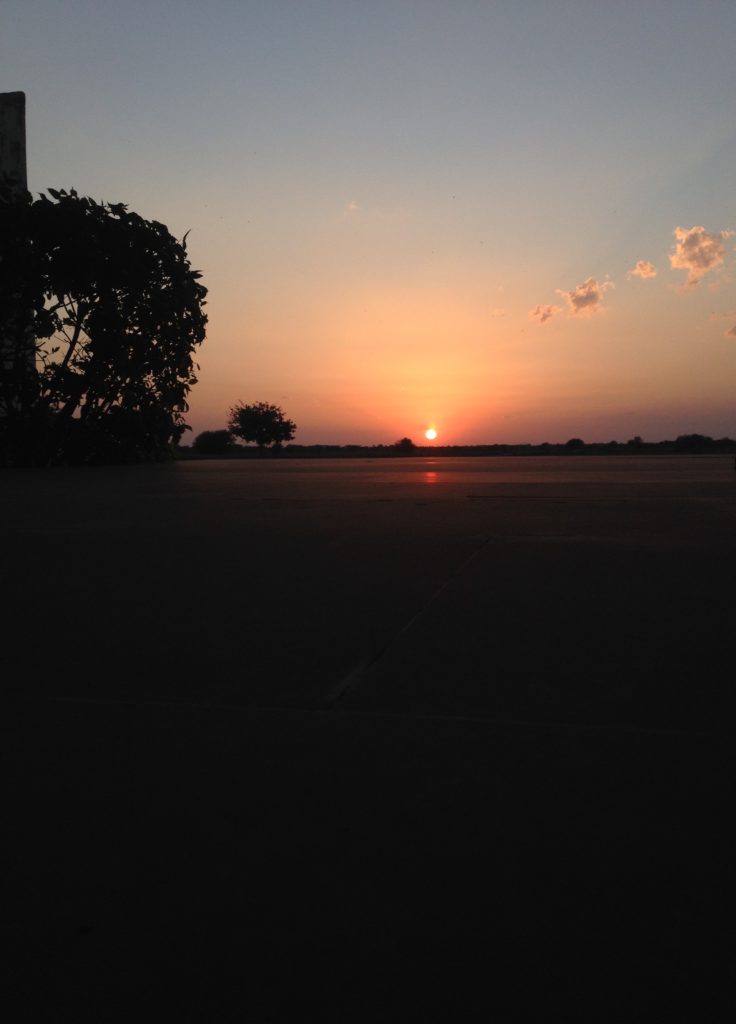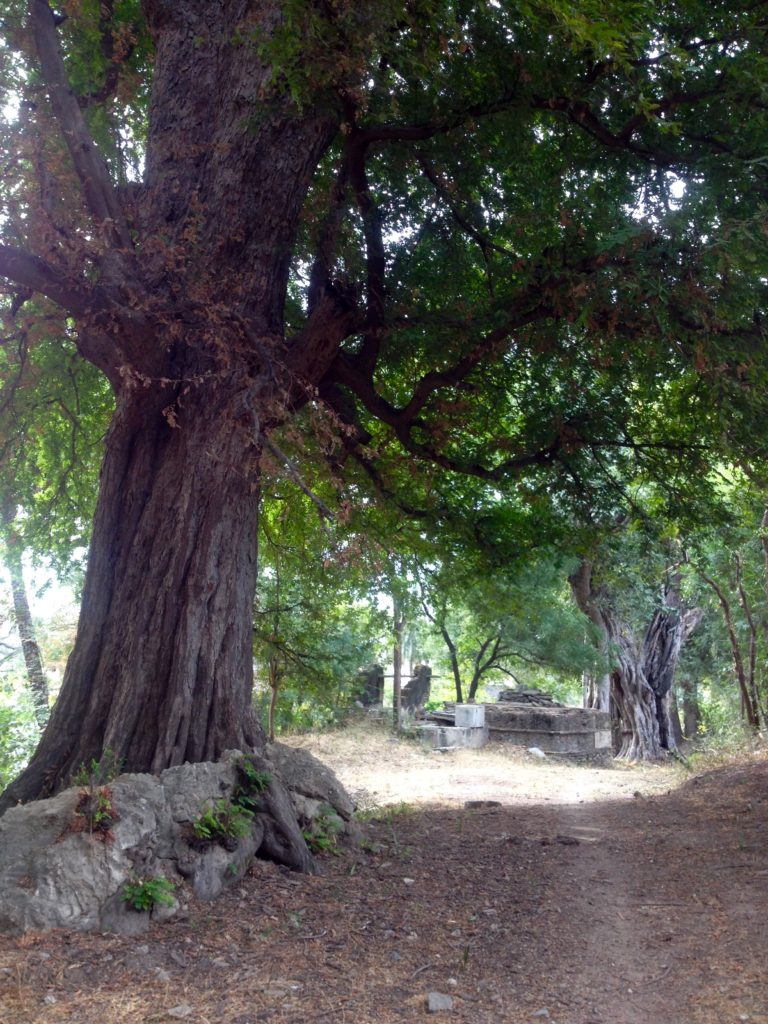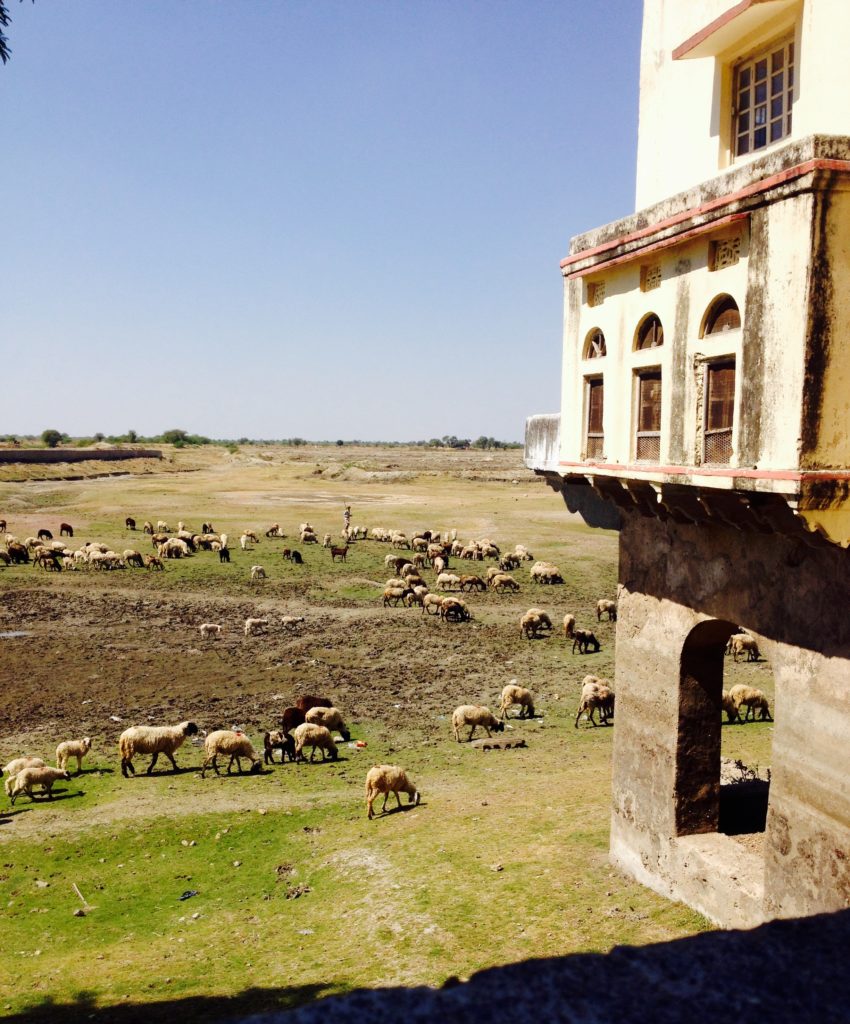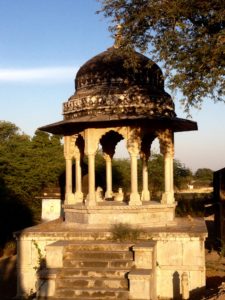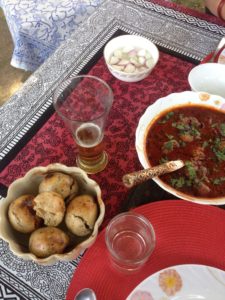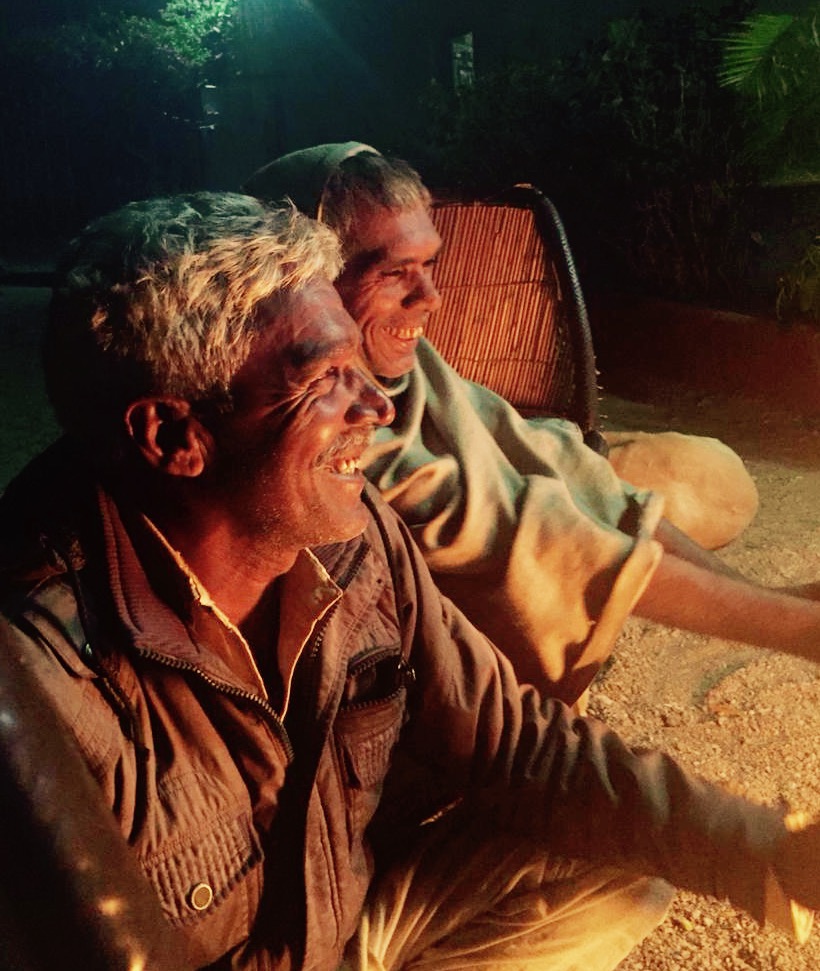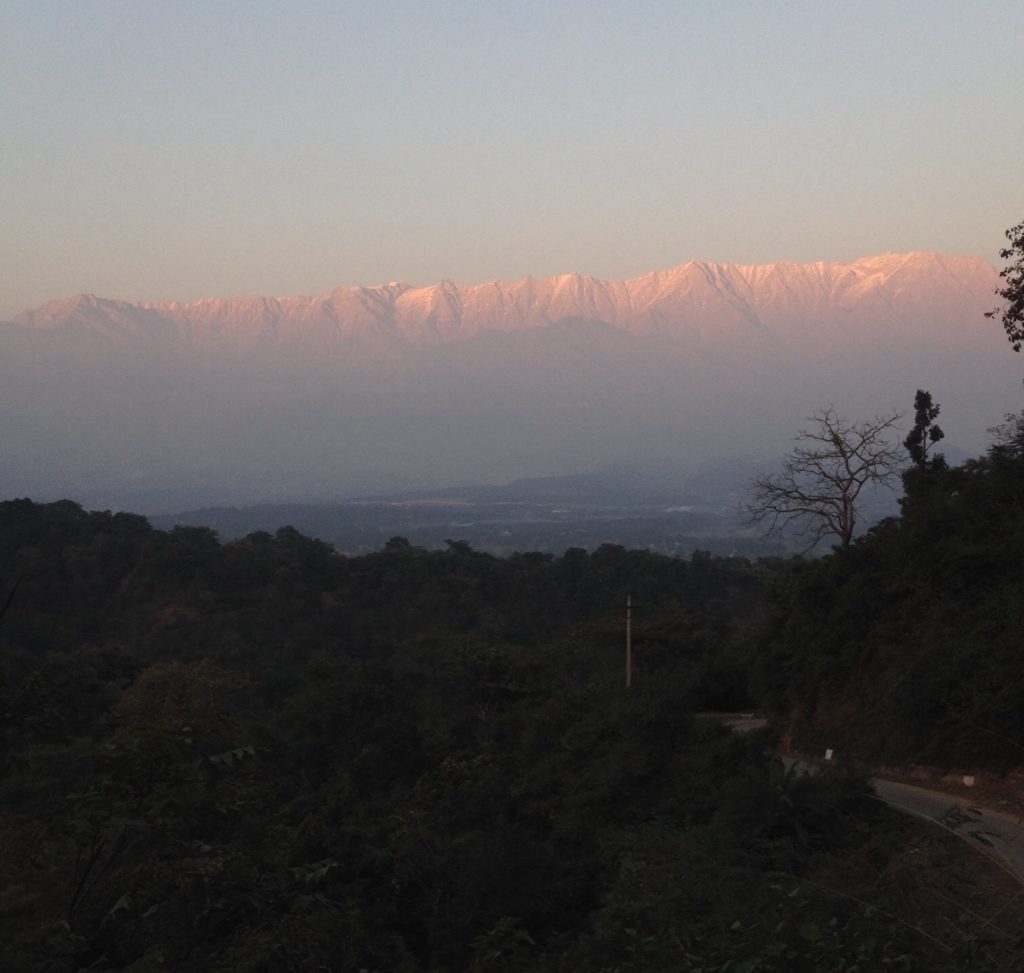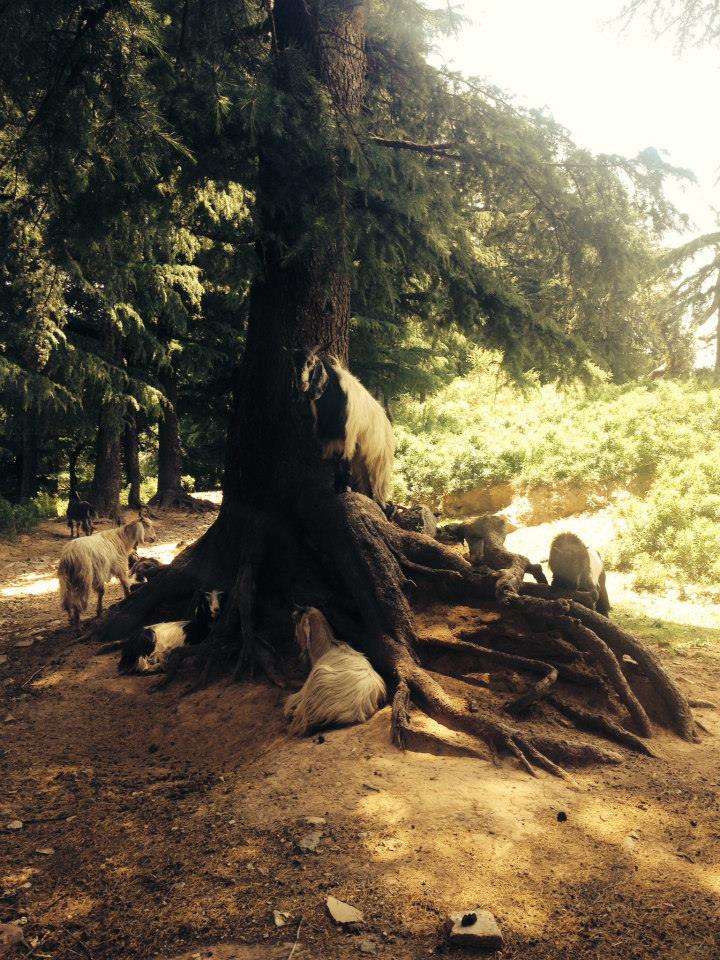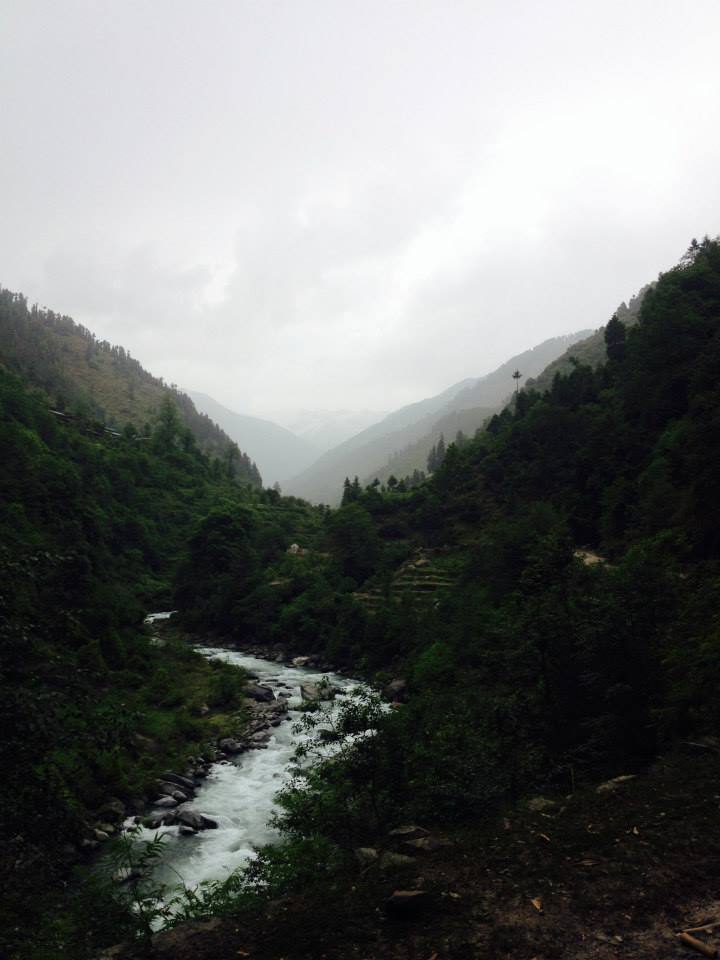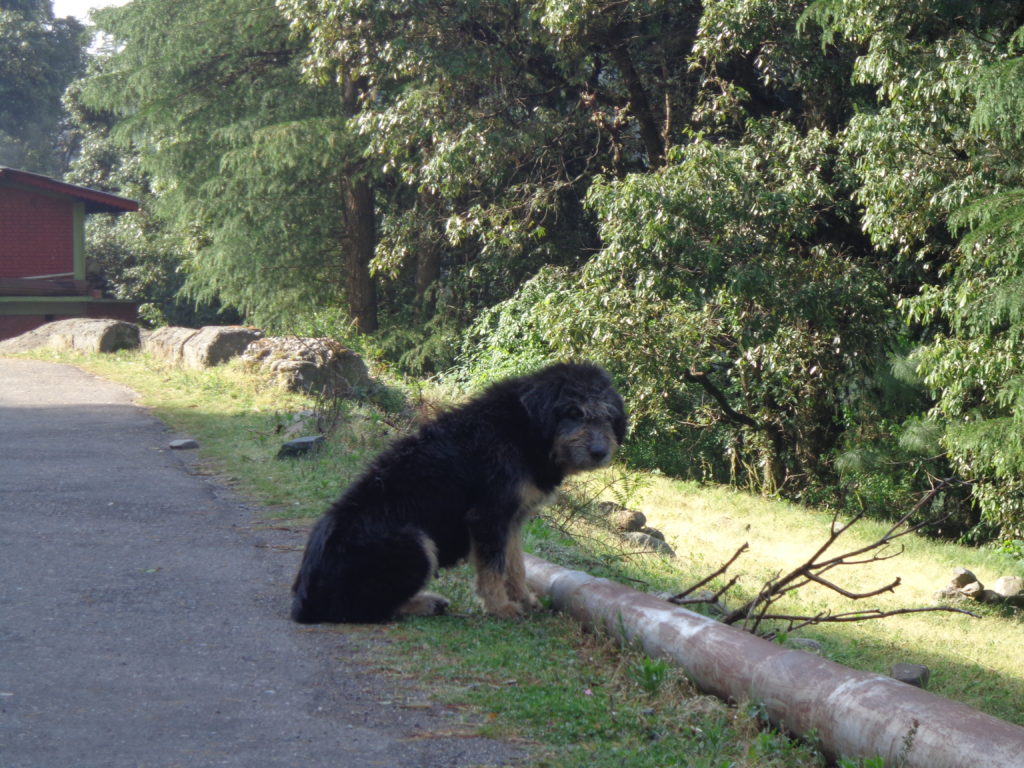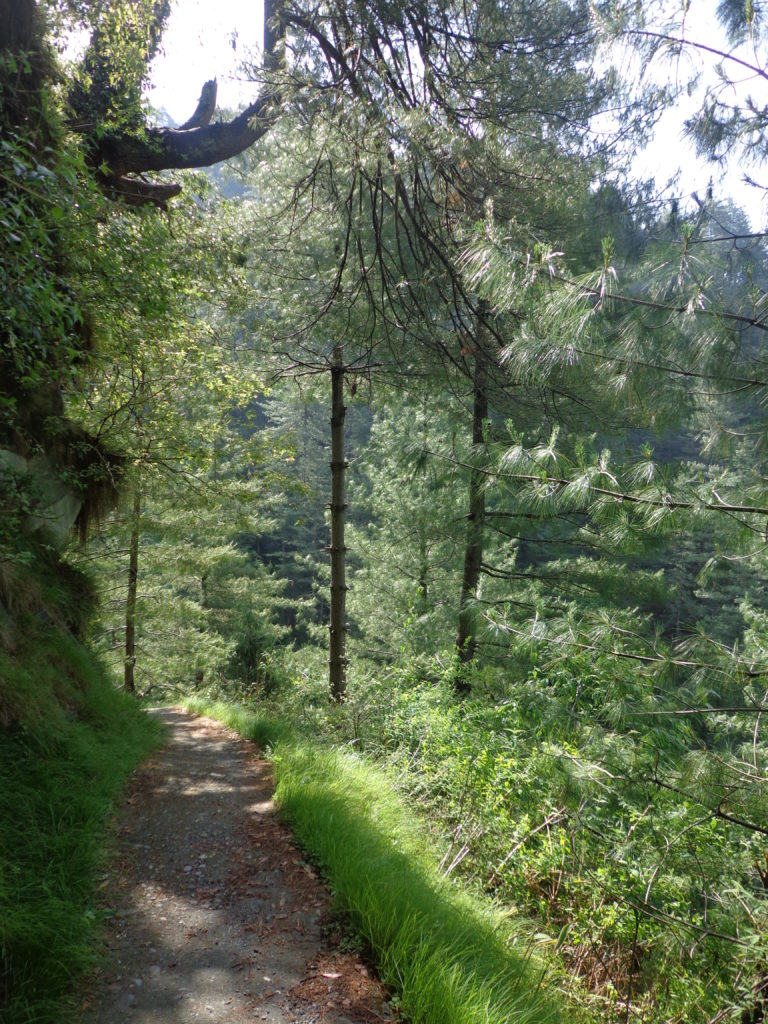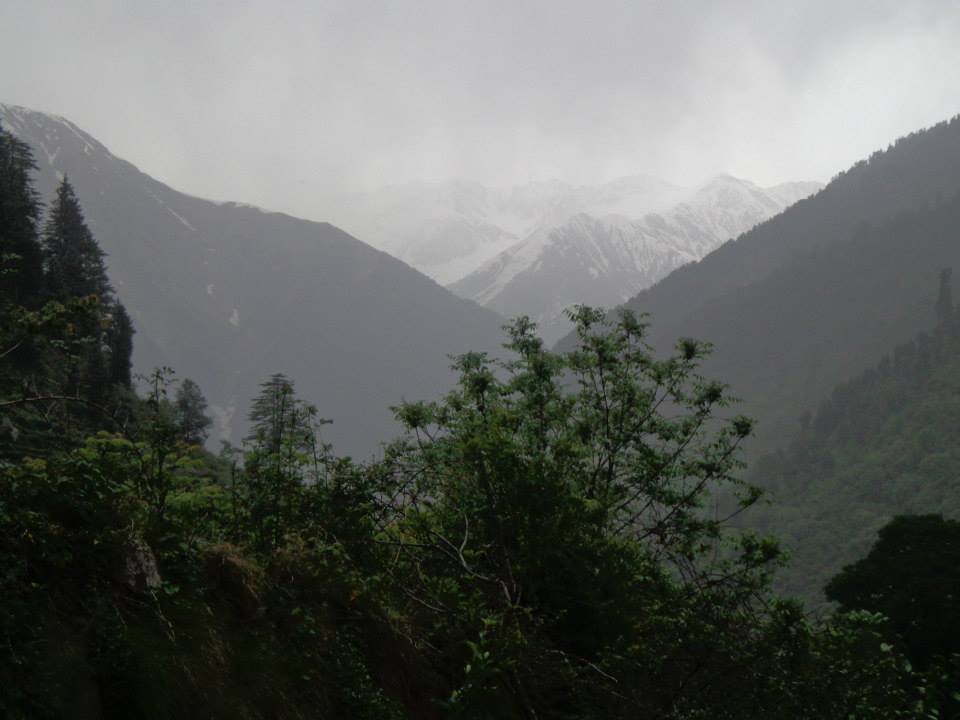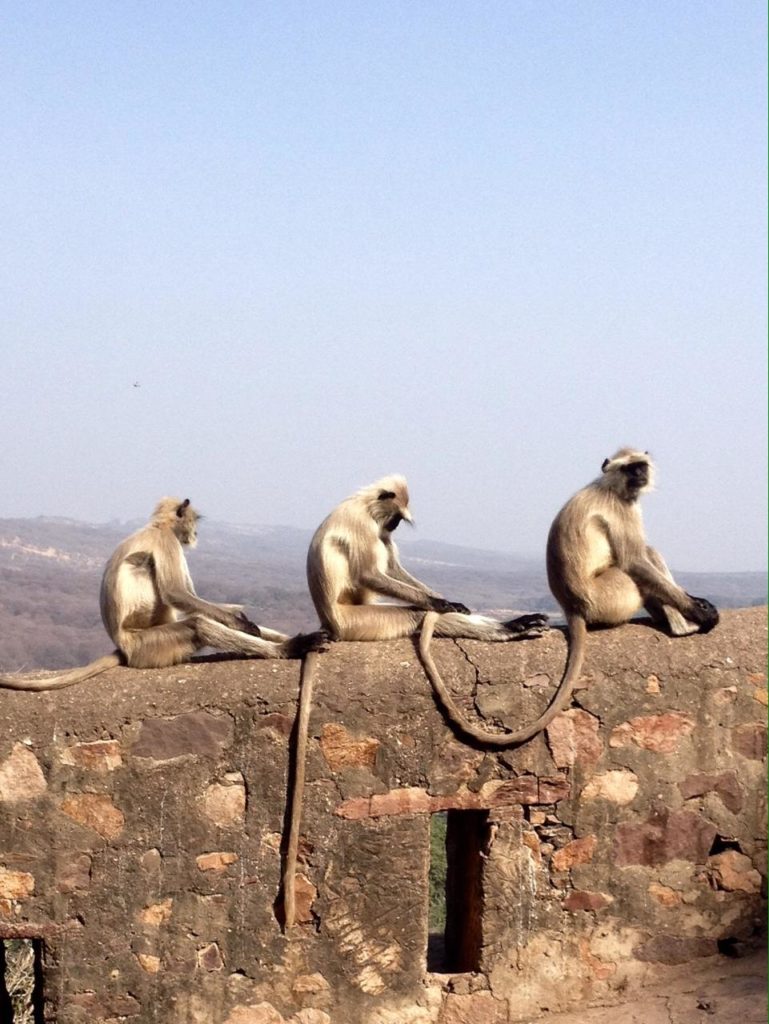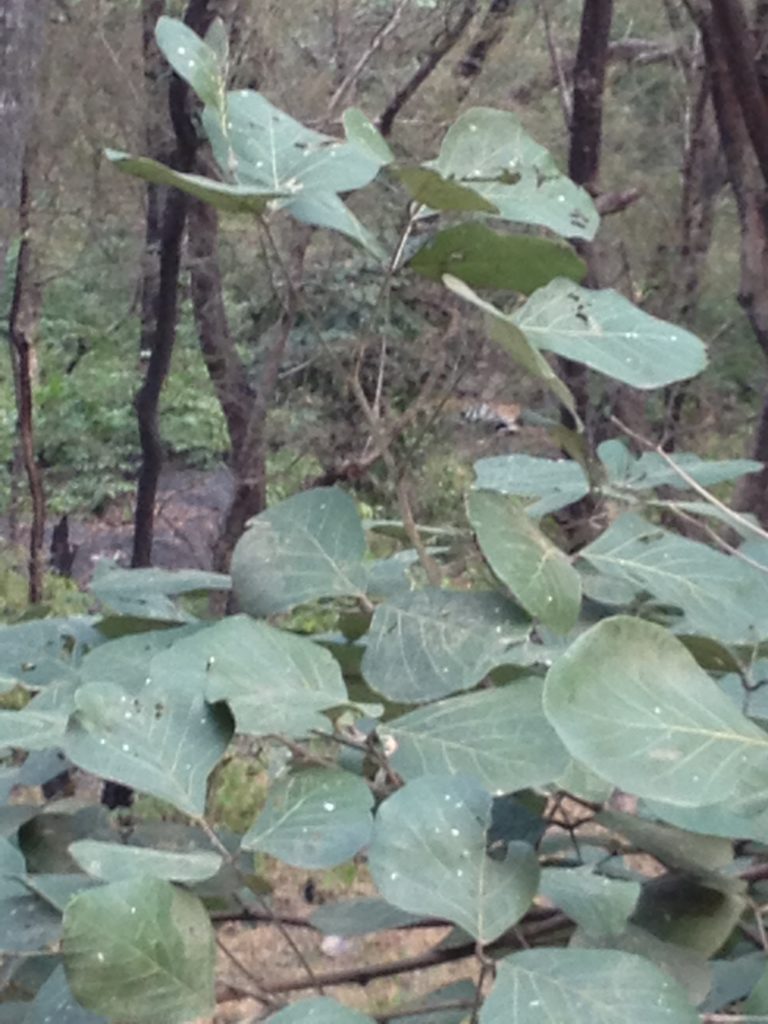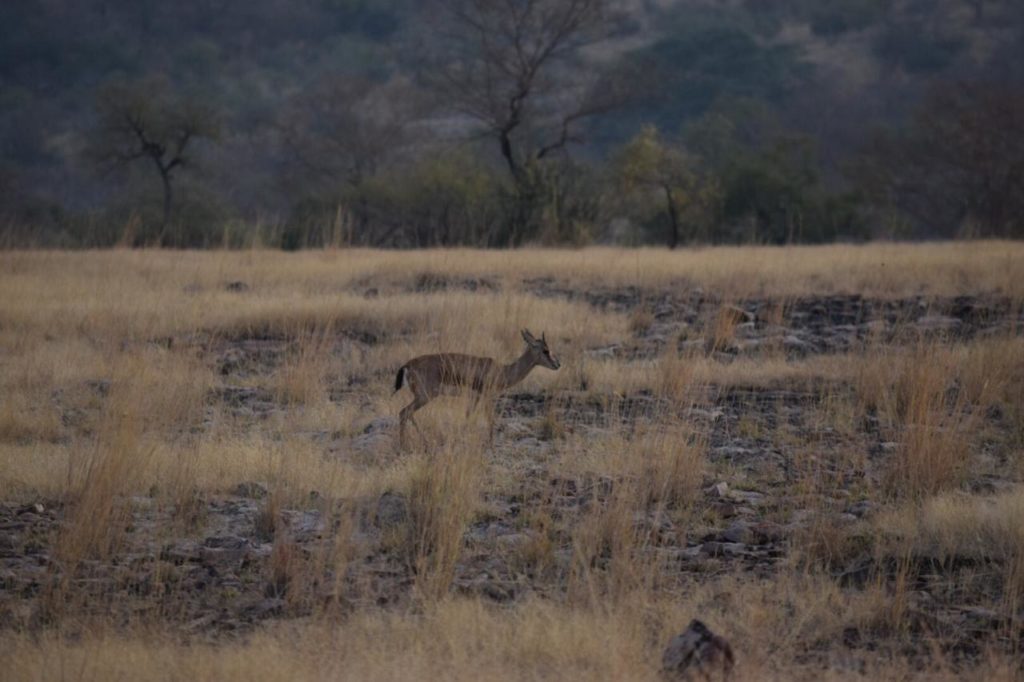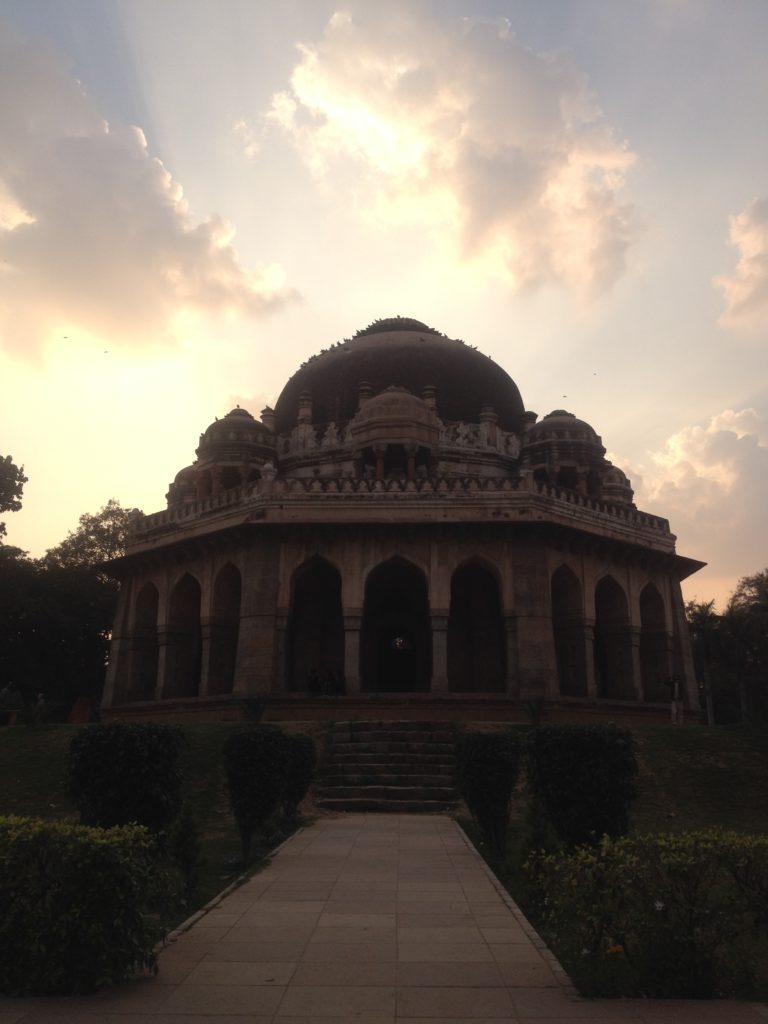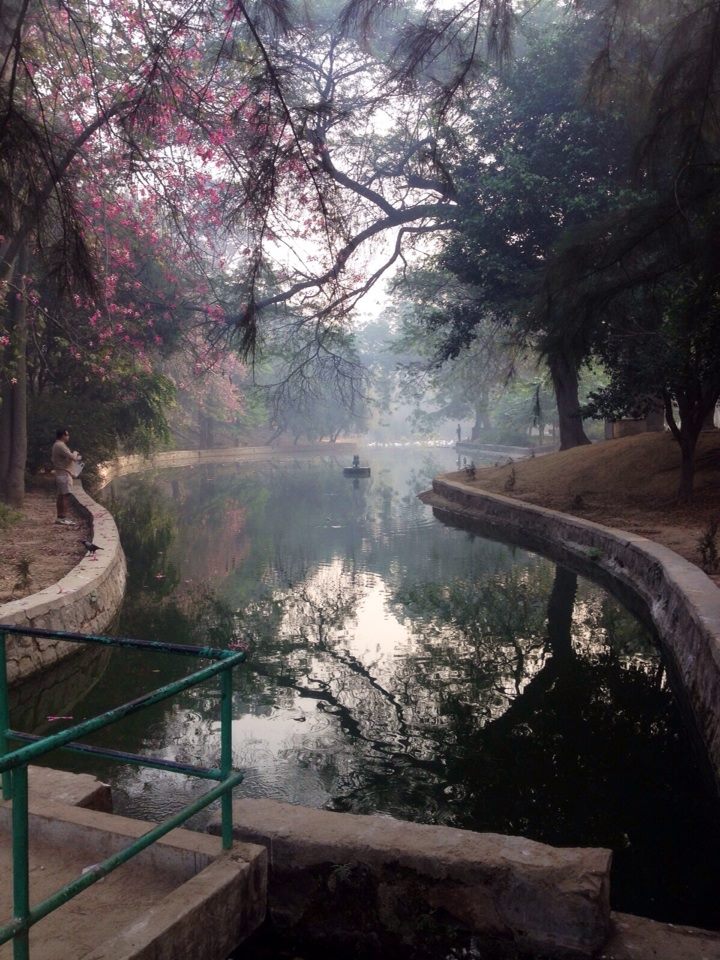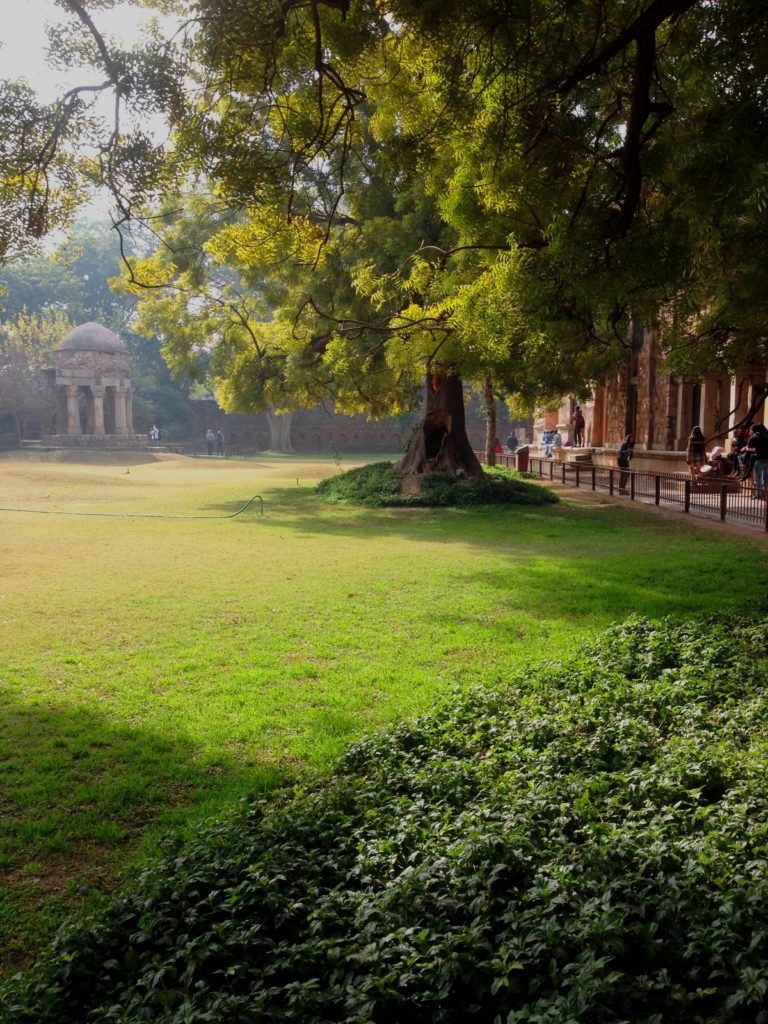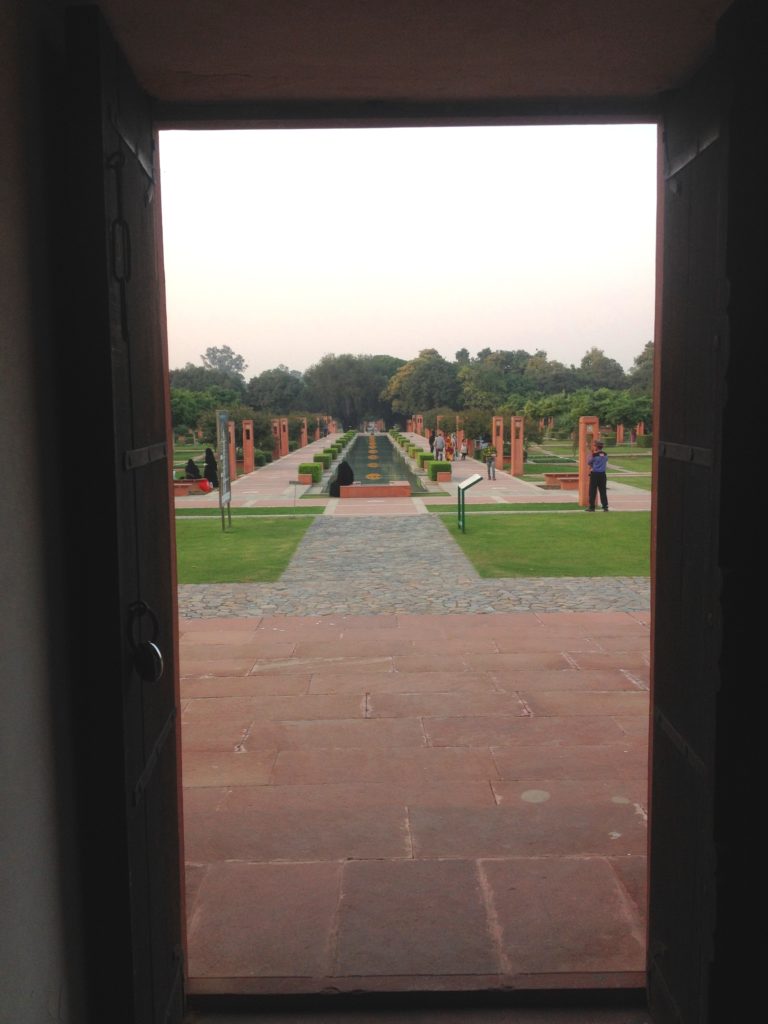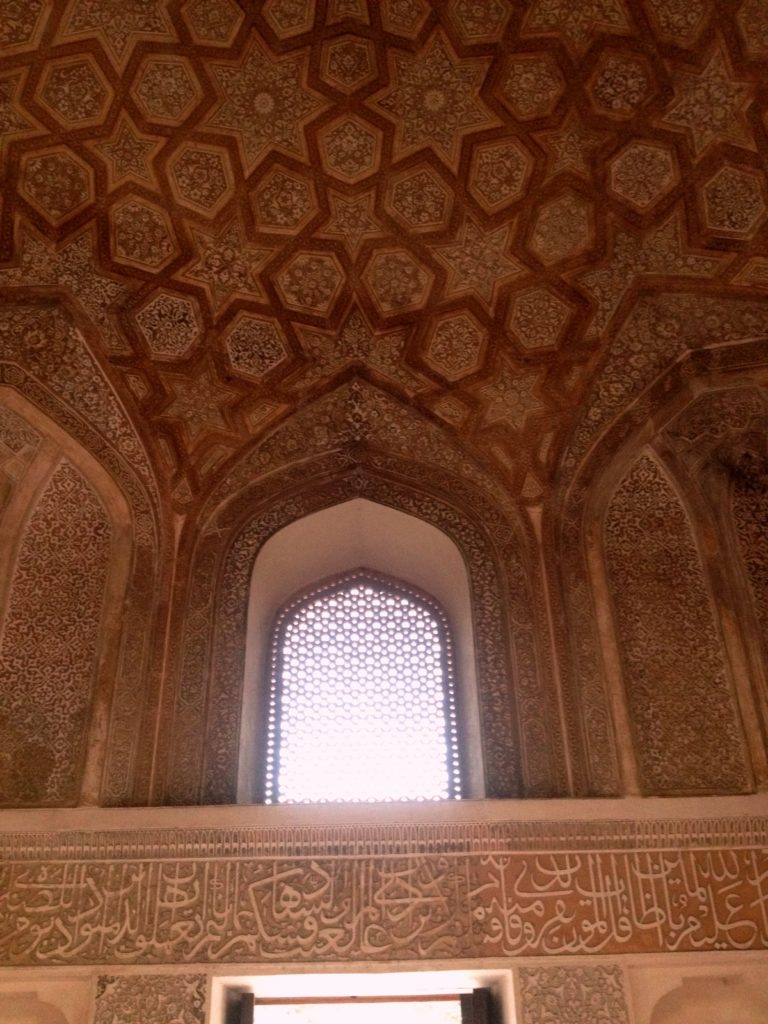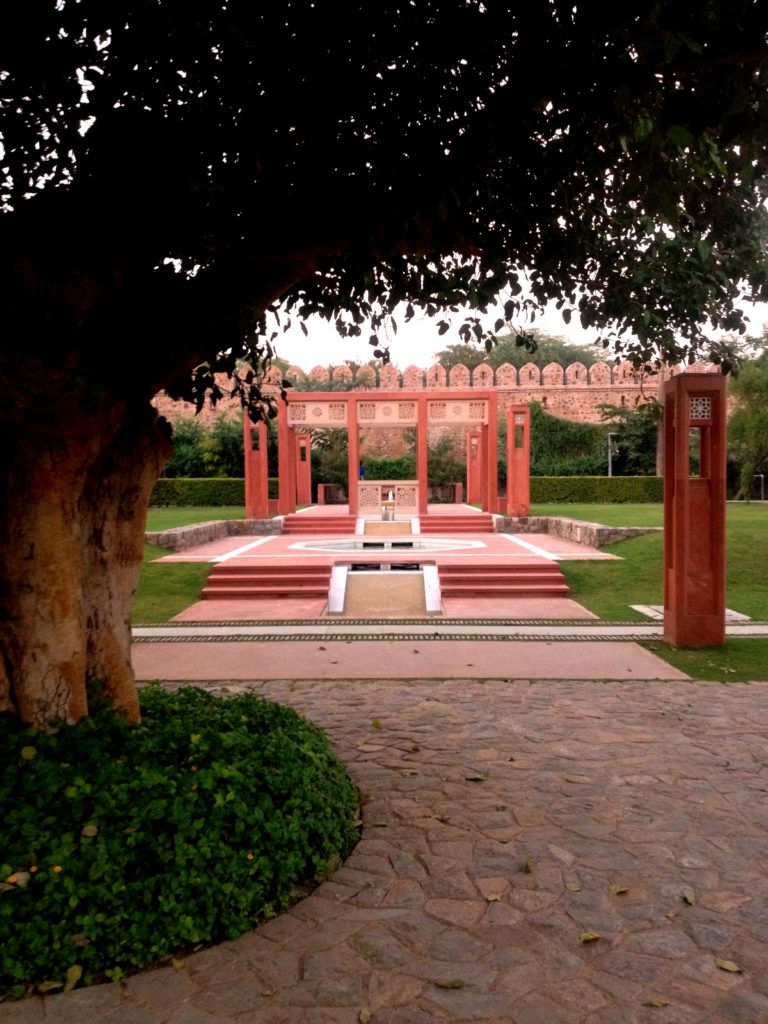A knock on the door made me jump out of my cozy bed. Draupadi stood there with a beaming smile and the morning tea tray. (A well laid tea tray is a dying art.) As she placed the tray on the table I drew the curtains back in the big window of my spacious room. The Kachnar trees outside the window were swaying in the breeze and the purple, fuchsia flowers stood out starkly against a grey sky mirroring the colour palette of my room. I suddenly spied the Yellow sunbird I had seen the previous afternoon, as it took off to chase a bumblebee, through the canopy of flowers and leaves. What a sight to wake up to!
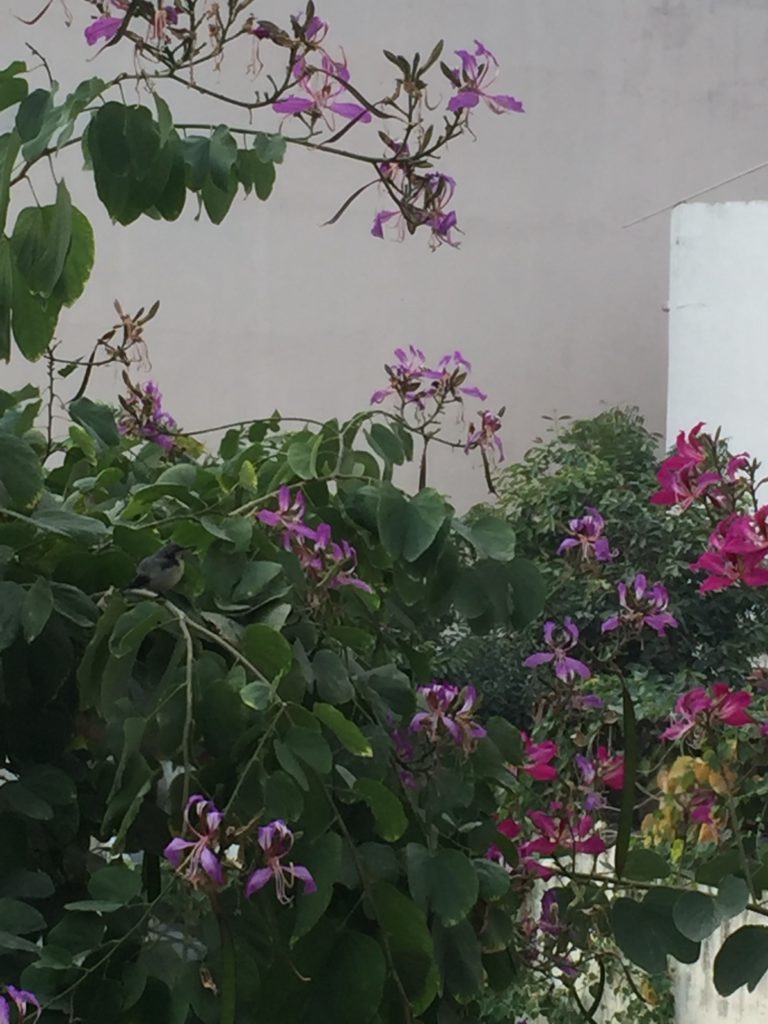
Jaipur Jaunt
The morning I reached, at the Jaipur railway station, as I cancelled my second Ola ride, a man, who has obviously been eavesdropping tells me that Bani Park, the tony locality where Dera Jaipur is located, is too near for most cab drivers to bother with sometimes. I thank my stars for its proximity as I re-book. (My Ola booking experiences are stories in themselves.) My third Ola driver – Lalu Prasad Yadav, who acknowledges his name with a wry laugh, deposits me in front of the homestay in 5 min. The gate is opened by a woman in traditional attire before I can ring the bell- Draupadi. She whisks my luggage away as I follow her, admiring the garden with its bougainvillea creepers in a mélange of colours framing the wall fountain. Mrs. Rekha Singh, my oh-so elegant host is right there at the door to receive me. The 5 bedroom boutique homestay – Dera Jaipur, belongs to General Karni Singh and Mrs. Rekha Rani Singh of the House Gangiasar.
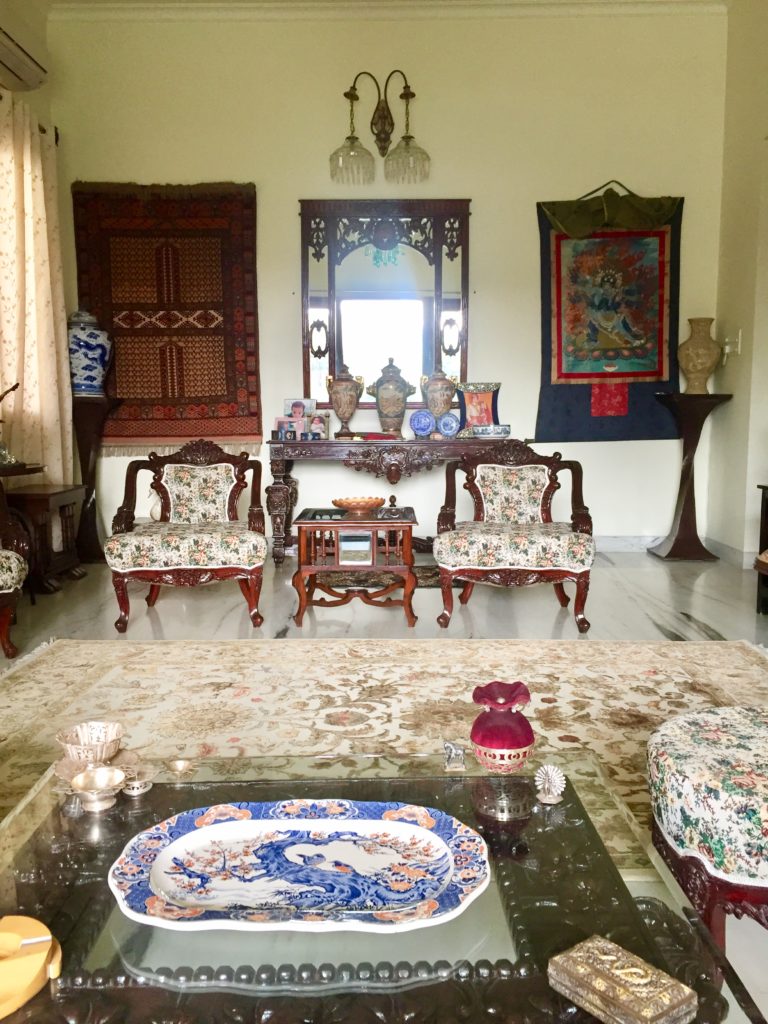
Dera Jaipur: Serenely Soignée
We sit down in her well appointed drawing room and exchange travel notes. Both she and her husband, General Karni Singh, a prominent neurosurgeon (Infact he was among the first to use Botox in India and is a passionate sportsman to boot. And no, I didn’t ask him whether I needed a jab or two.) are avid travelers and over coffee done to the ‘T’ in a giant mug (How did they guess that’s what I like my coffee in!) she regales me with anecdotes of their recent travels. As I admire the room, an eclectic blend of family heirlooms and tasteful bric a brac from their travels, she points out the rug gifted by the erstwhile King of Afghanistan and the Thangka , gifted by the King of Bhutan, both having been attended to by the General. What I particularly love about the place is that it is a home, classily done up, reflecting the times we live in but the hospitality is rooted in traditional ethos. The ‘wow factor’ is refined without overpowering and is centered mostly in the common areas.
As we wait for lunch to be served, I am introduced to the family history and that of the Shekhawat rulers depicted in the mural dominating the dining area. The family is part of one of the ruling clans of the harsh and unforgiving Shekhawati region, which used to stand as a bulwark on the trading route, north of Jaipur and has produced a proud race of warriors. There are stories told down the generations, of traditions, alliances, and of aboriginal tribes now lost.
Discover the land of other warriors in- Picture Postcards from Bundelkhand and other stories.
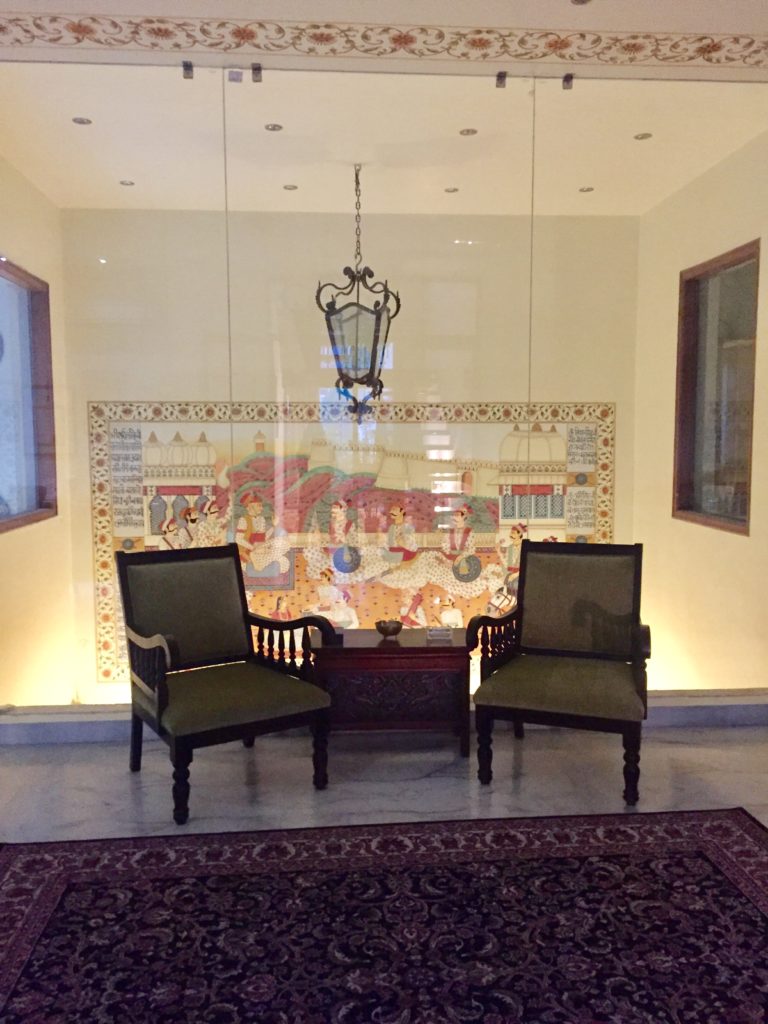
Lunch is a traditional fare of melt in the mouth patod and bajra roti along with mirchas made in typical Shekhawati style. After that and given the early morning start I’ve had, I happily crawl into a big inviting bed. (The one reason I dislike Shatabdis- their ungodly departure timings from Delhi.) The rooms are spaciously serene yet elegant and the hostess’ love for art and drama pops up here too. One has its own private marble waterfall outside the window, another has this painting conceptualized by Mrs. Singh to depict homecoming with the very Indian iconography of gaudhuli, happy cows being led home by a blue bull depicting Krishna with a Pichwai backdrop. An artful summing up of Dera Jaipur.
Indulge in some Rajathani food fables of another house in- Satiating Nostalgia Under the Winter Rain at Junia
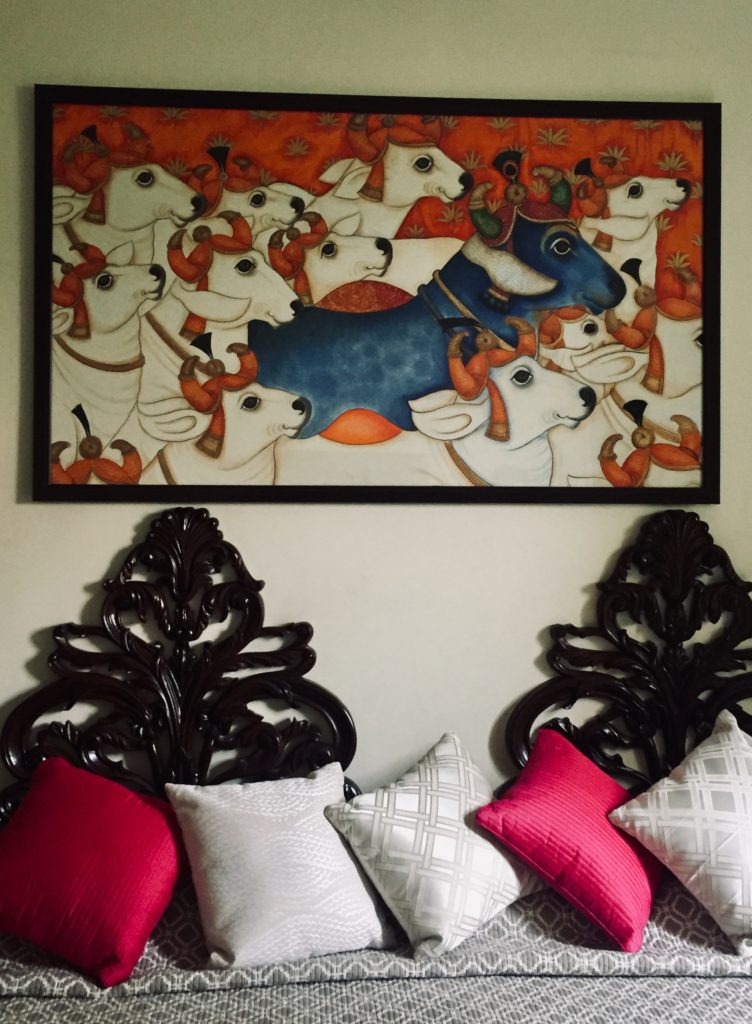
The evening tea tray bears a generously filled, flaky kachori. I philosophically wolf it down. I mean Rajasthan is home to this and if not here then where? But after that thankfully someone in the house has read my mind and dinner is a light affair with a touch of the Raj starting with a flavourful Mulligatawny soup. The next morning after a hearty breakfast which includes Bajra Raab sweetened with organic jaggery I am so tempted to just hang out on the bougainvillea lined terrace with a book from the small library and a mug of coffee and totally skip the shopping planned at Sikar market. I just manage to make a quick dash as visions of missed steal deals nag me.
Discover the kachori’s big cousin in- Nasirabad’s Kachora: More than a Savoury Story
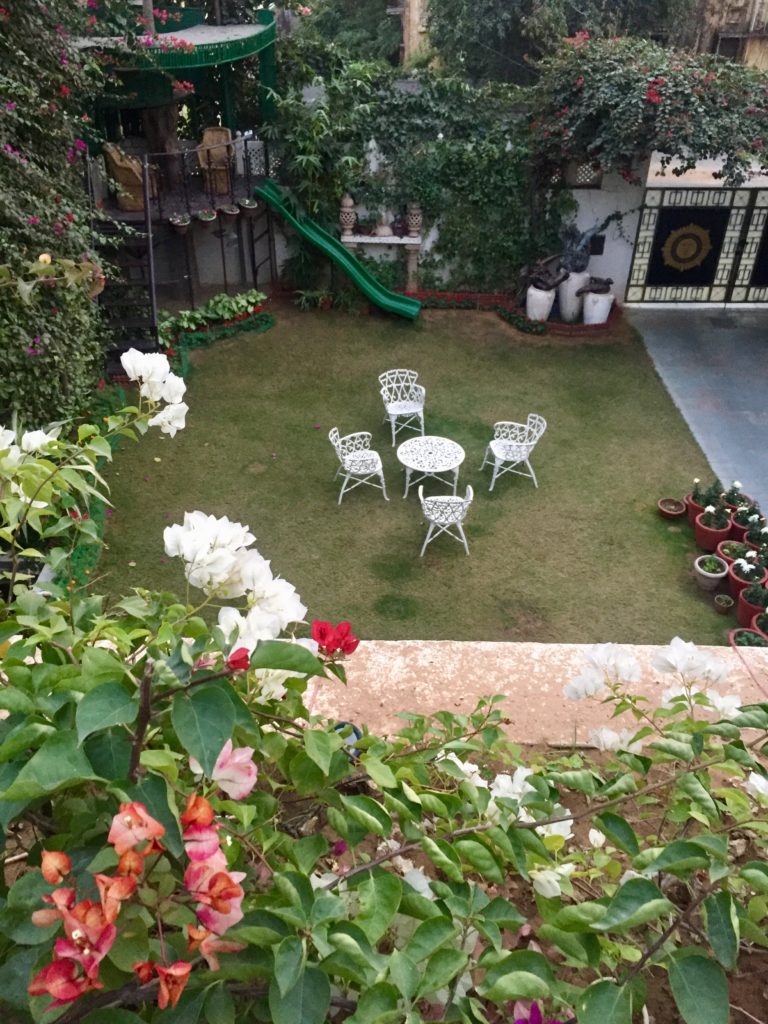
I went as a guest but I left feeling like I have a home to go to in Jaipur now. The experience is distinctive and thoughtfully planned and one might be tempted to forgo the charms of Jaipur. I experienced hospitality Gangiasar style and had a staycation at a special home. When are you planning yours?
Niche Experiences at Dera Jaipur
My stay was too short to experience the activities that can be organized if one wishes, at Dera Jaipur, apart from the usual.
Attend a culinary demo or better still, be part of a select crowd sampling a curated sit-down meal by a chef specially invited to lay out the gastronomical spread.
Dabble in mural art work under the tutelage of an expert and take back the masterpiece!
Over a sun-downer, have a fun photo session all dressed up like the rajas of yore.
Pre-book a special celebration during a family get-together.
Fact file-
Address –
D-226, Tulsi Marg
Bani Park, Jaipur, Rajasthan
Website- https://www.derajaipur.com/
Tel: 073575 42999
